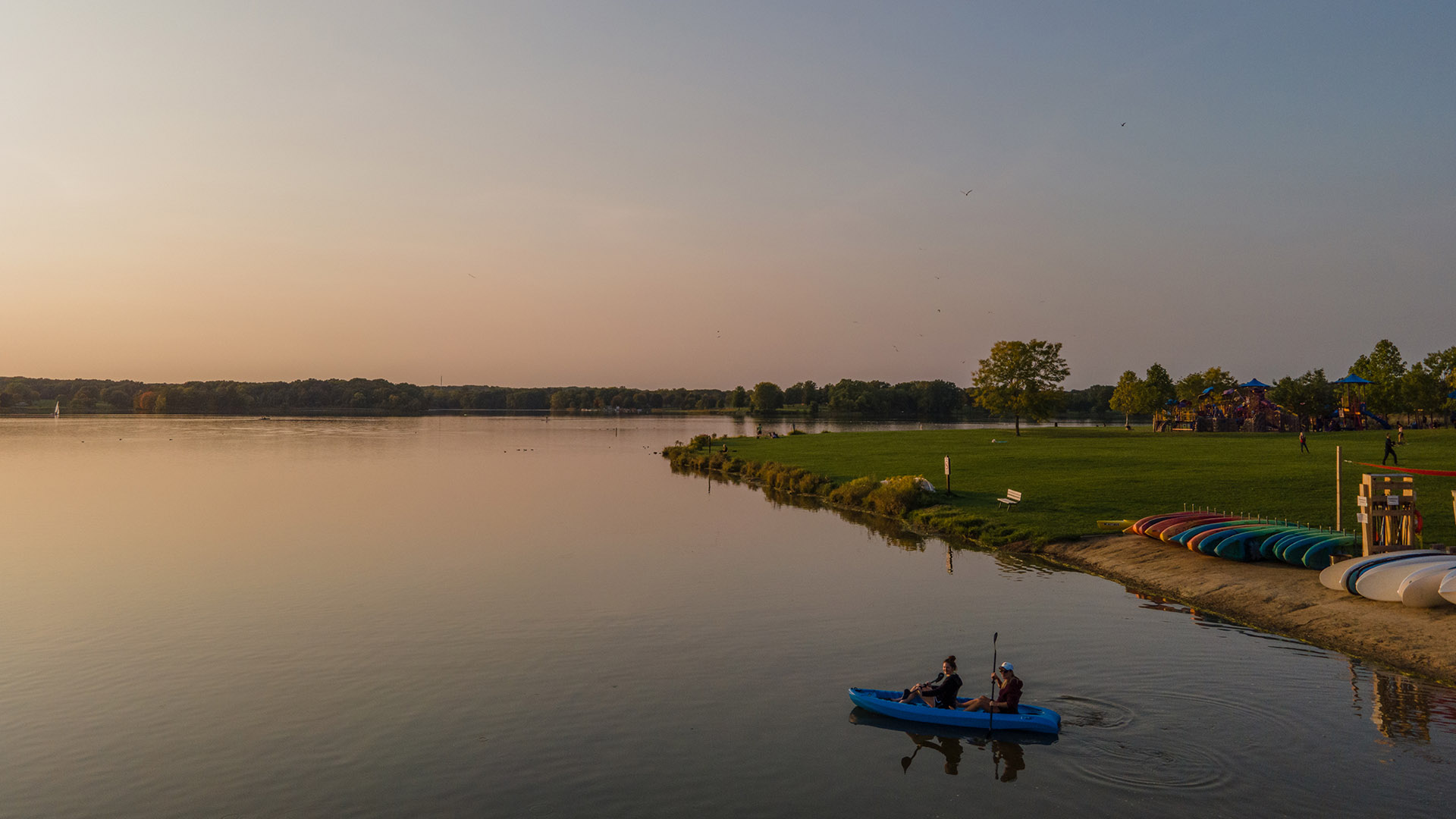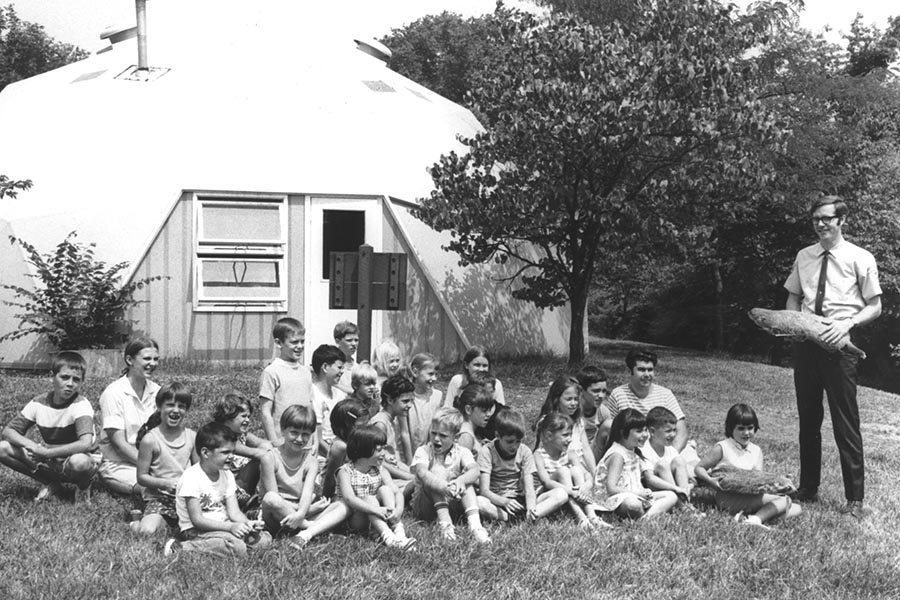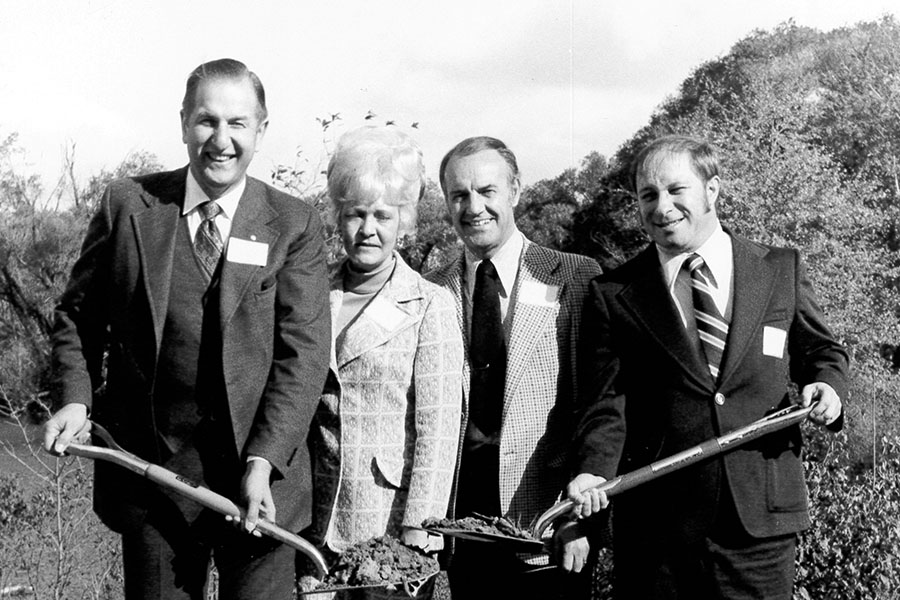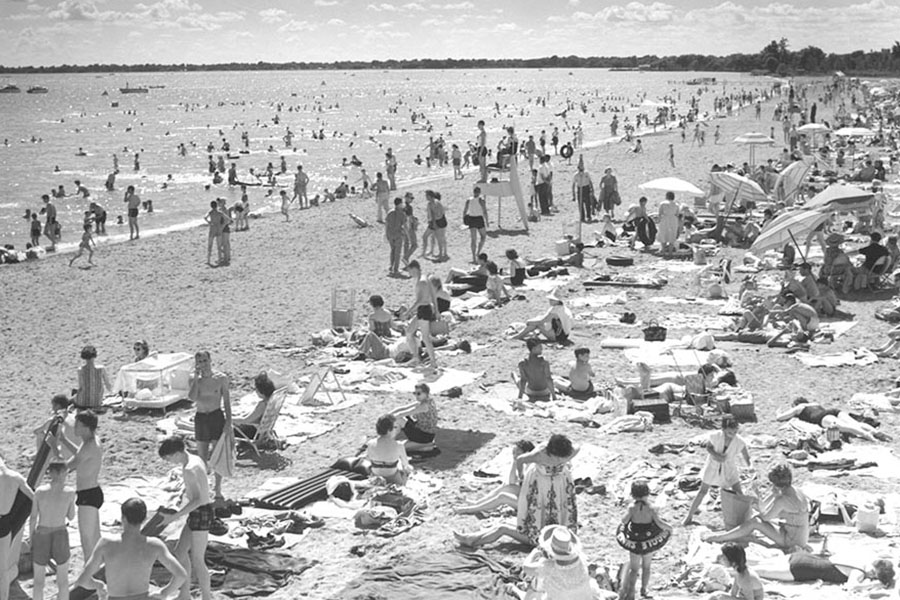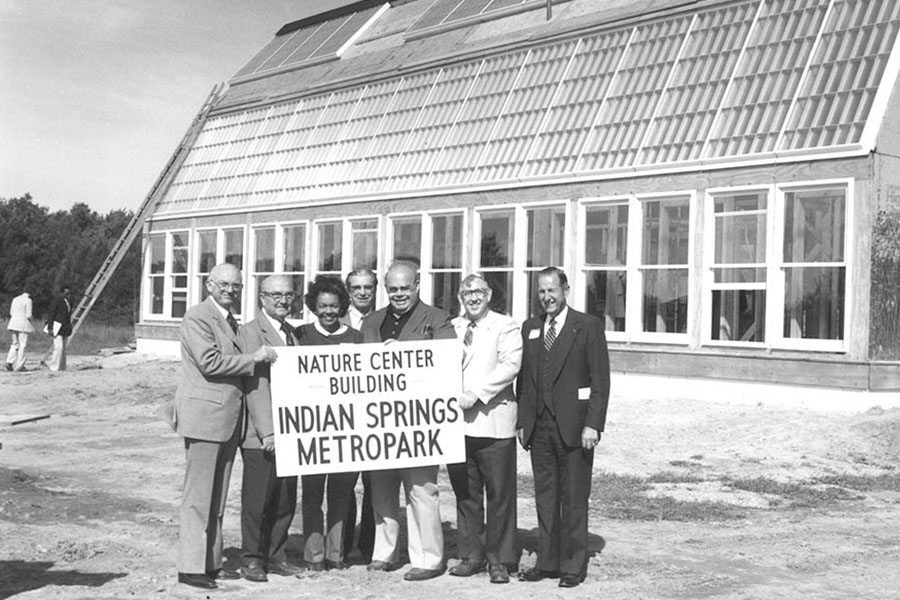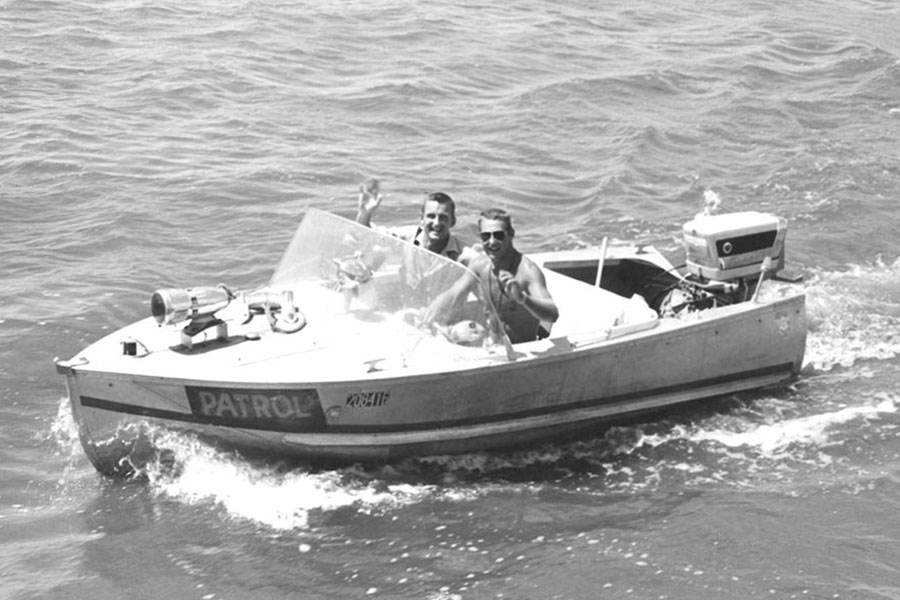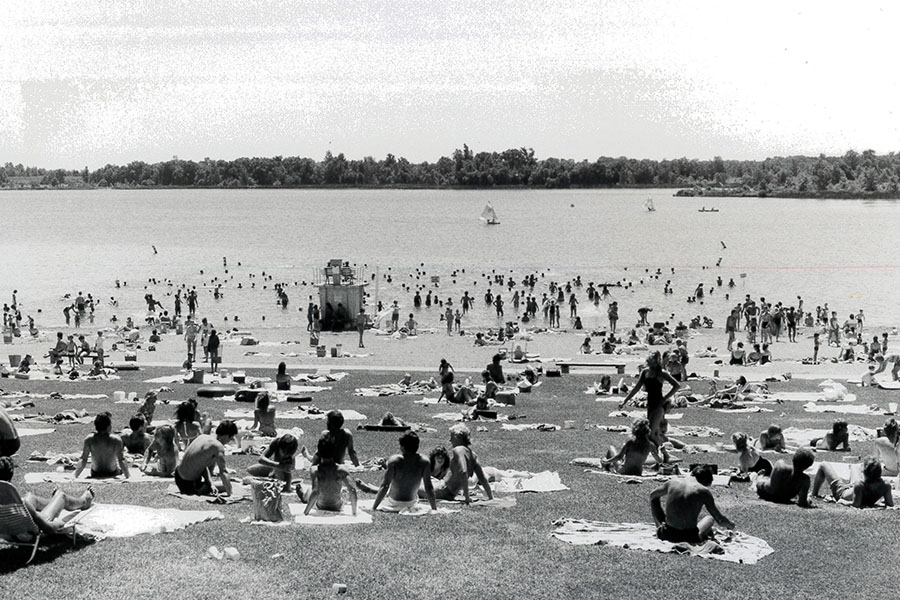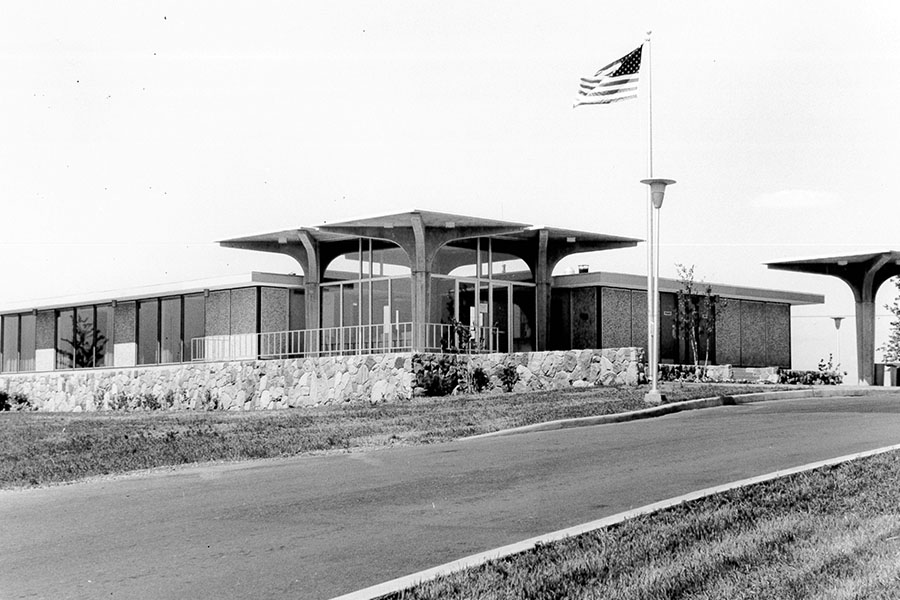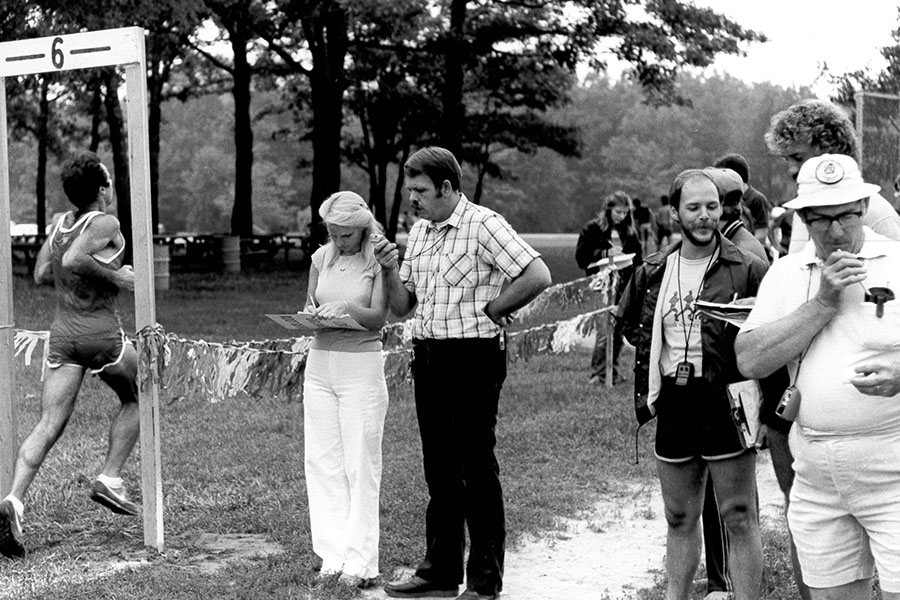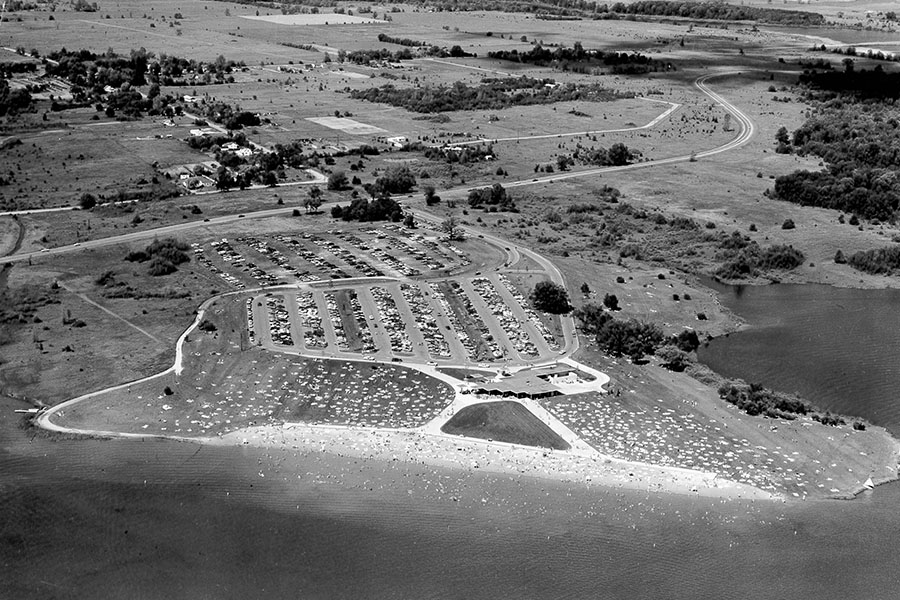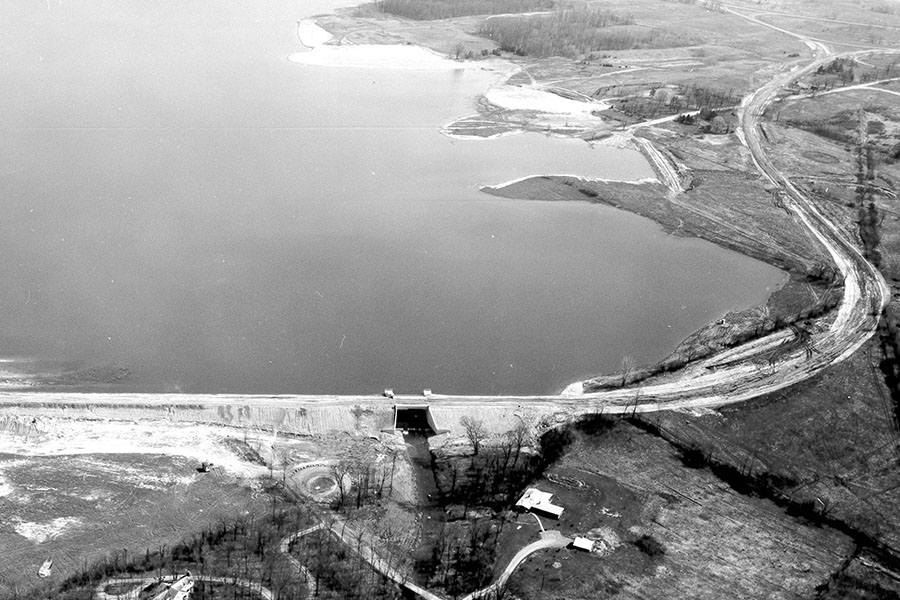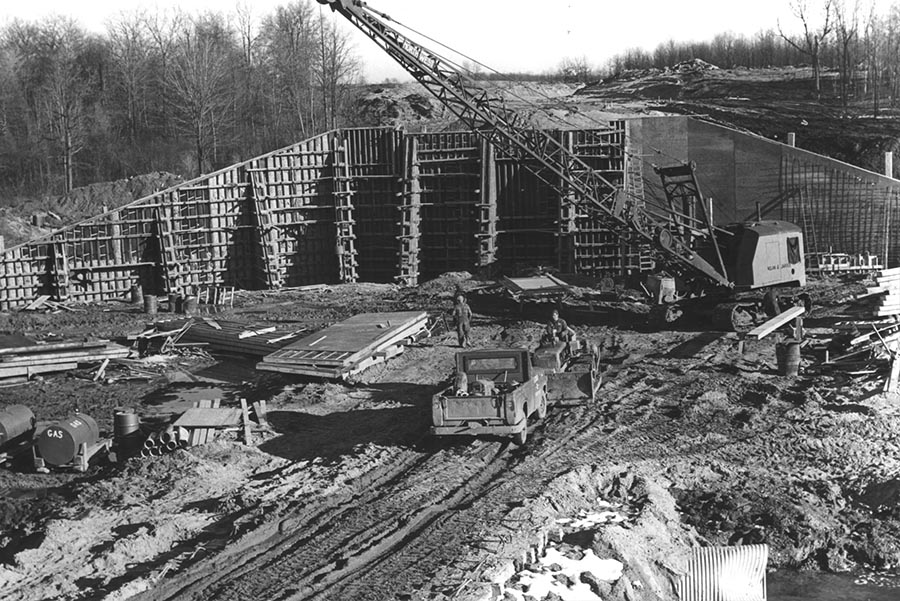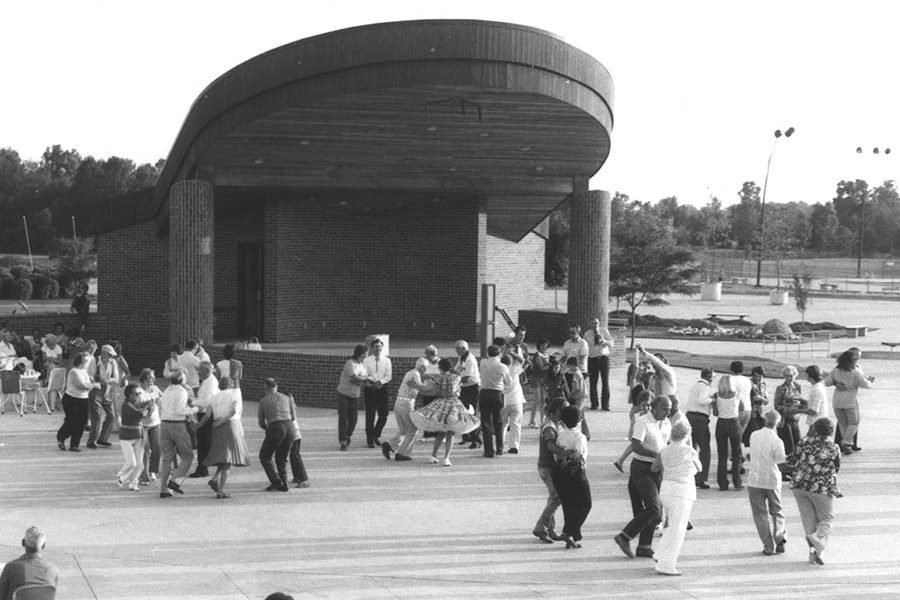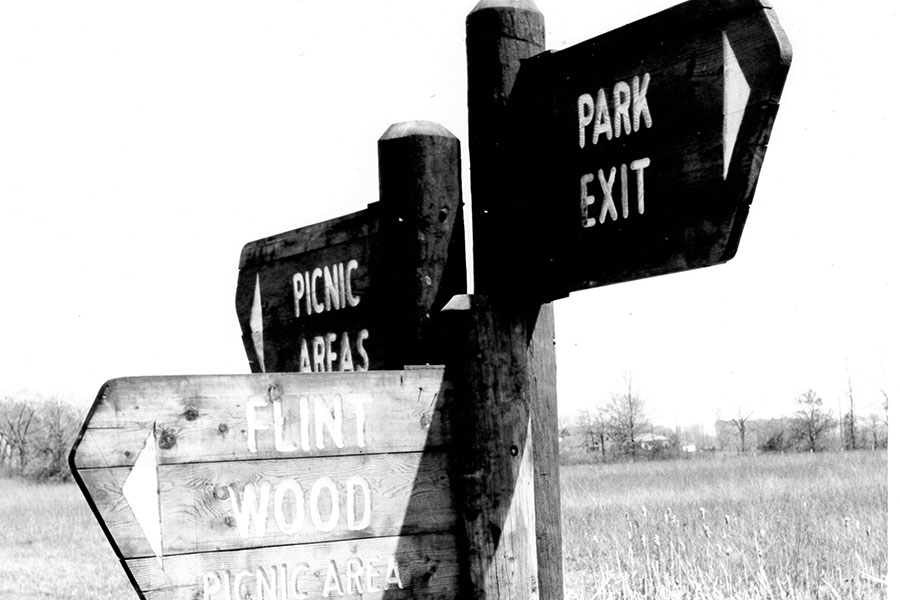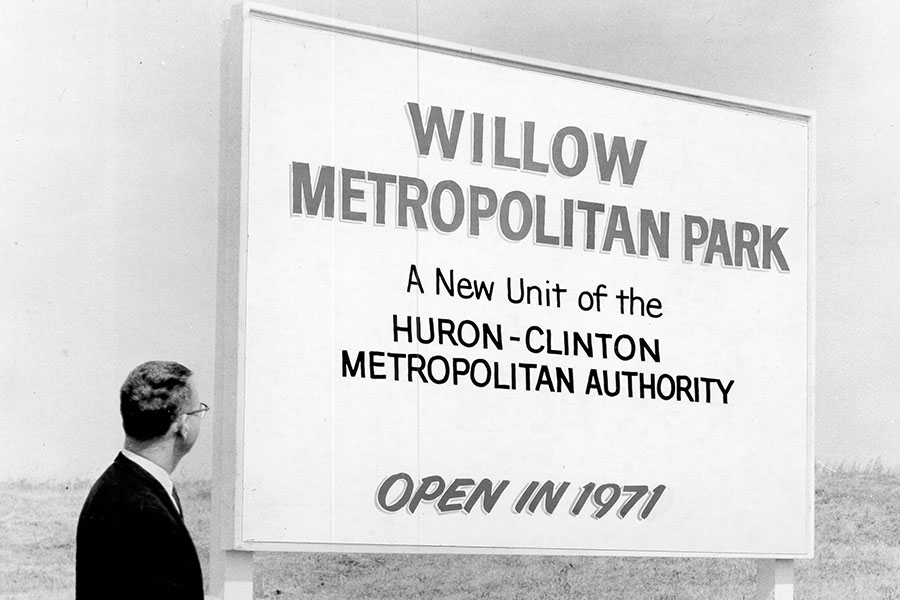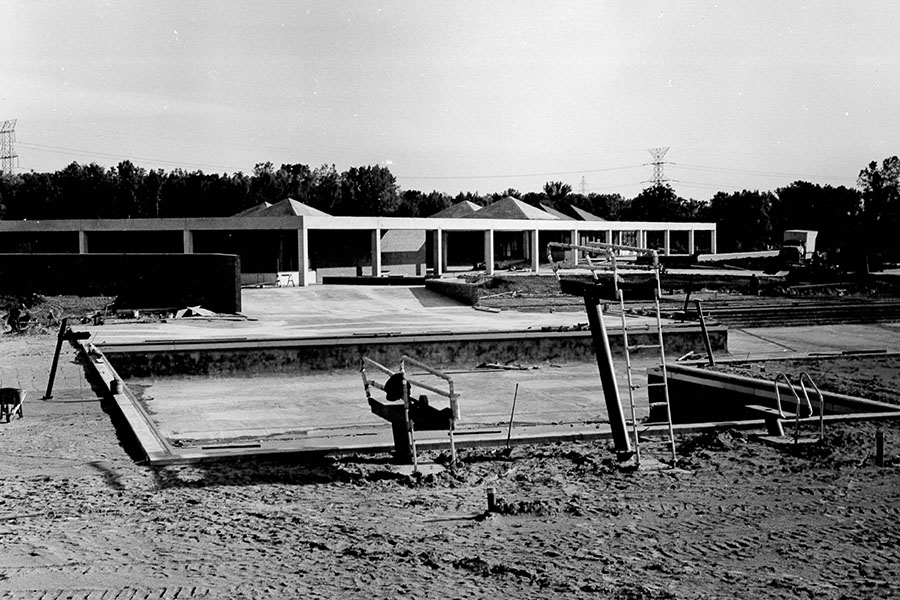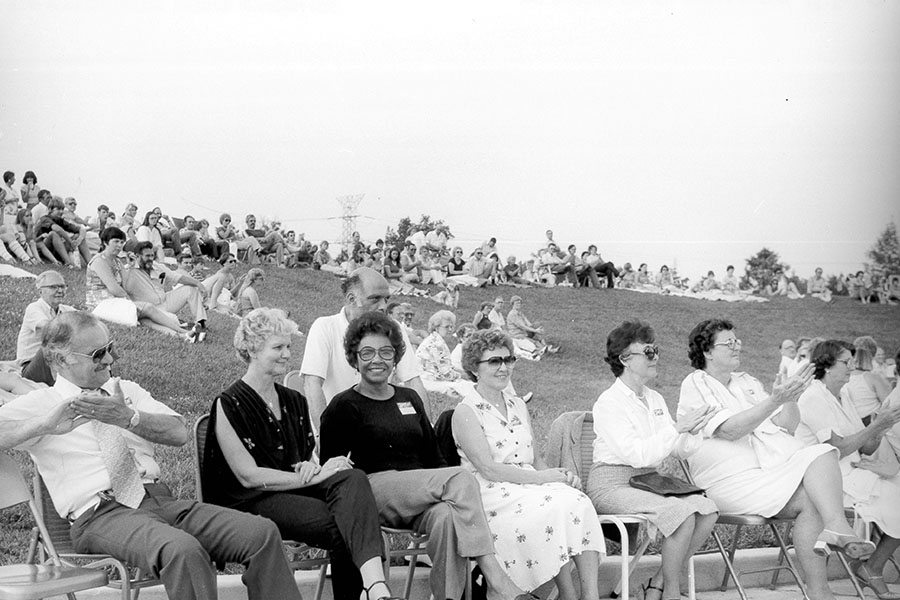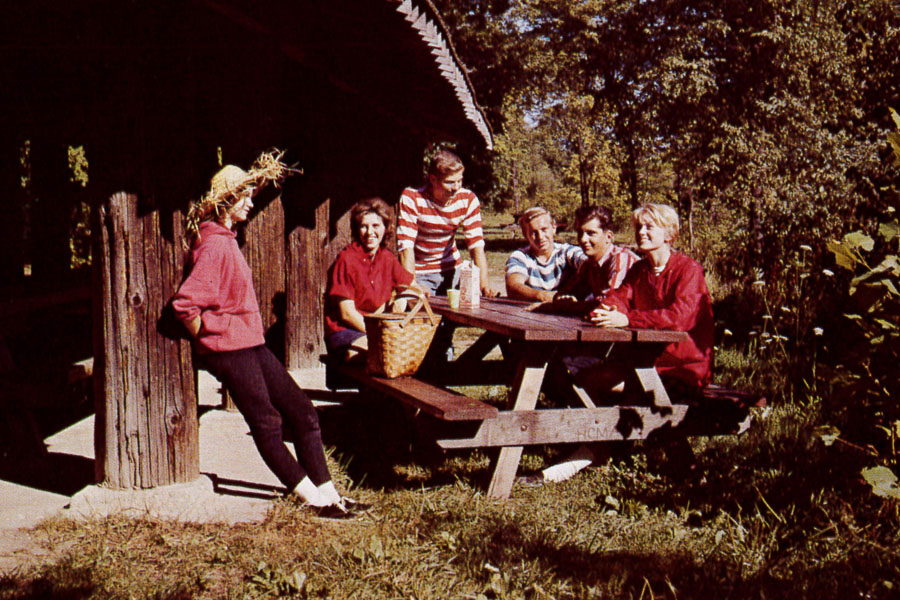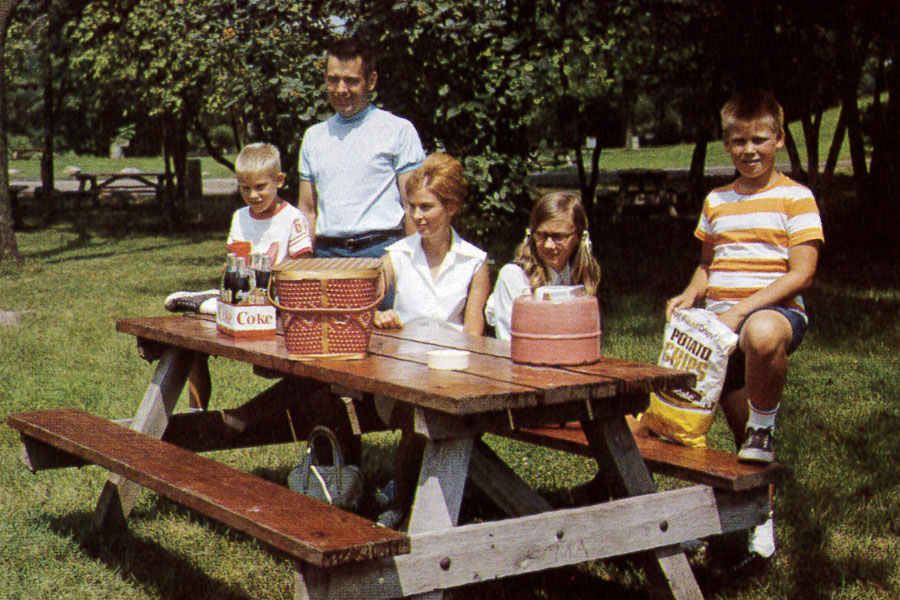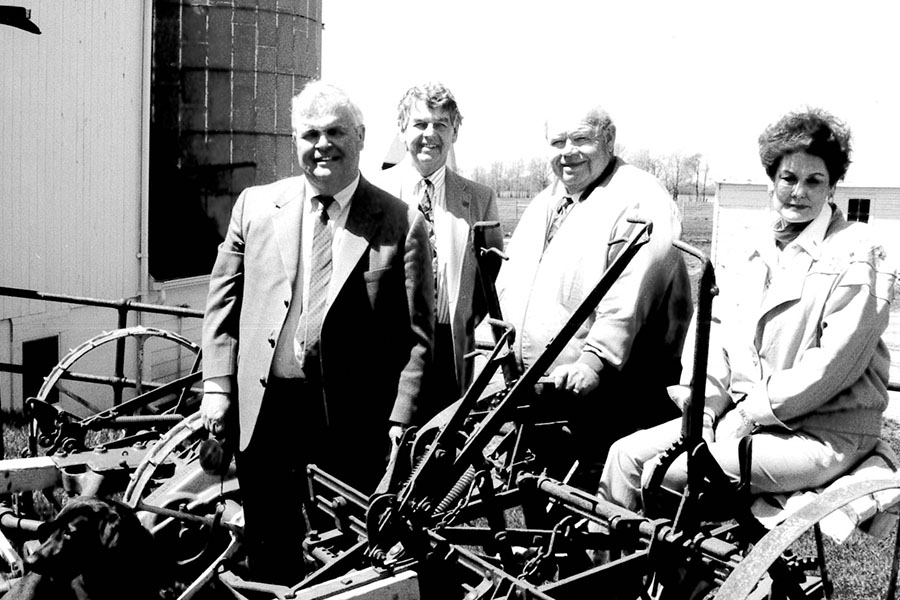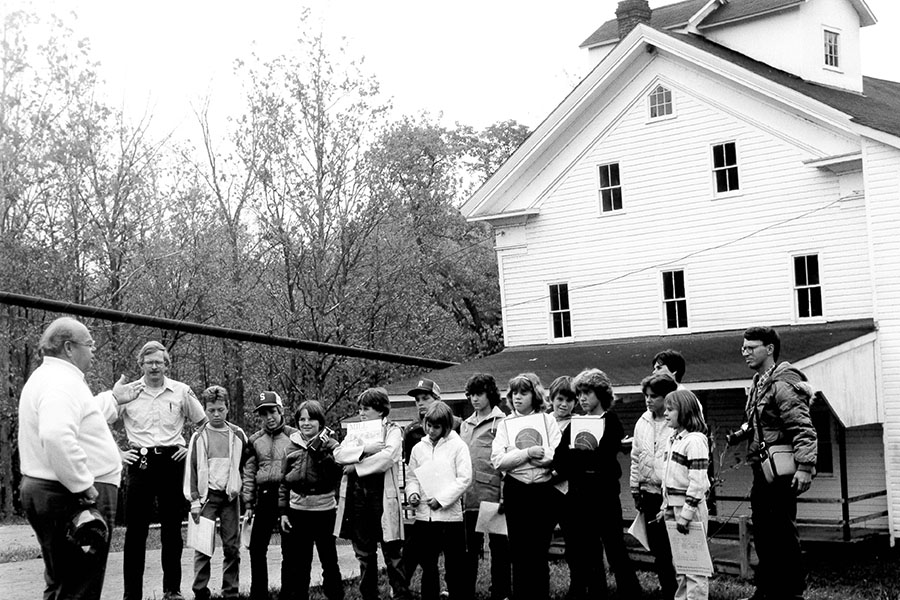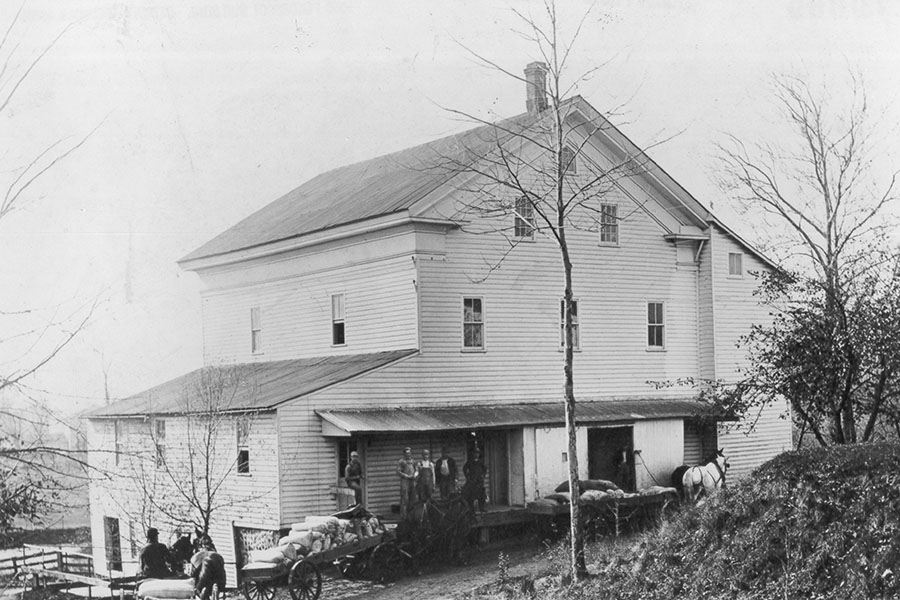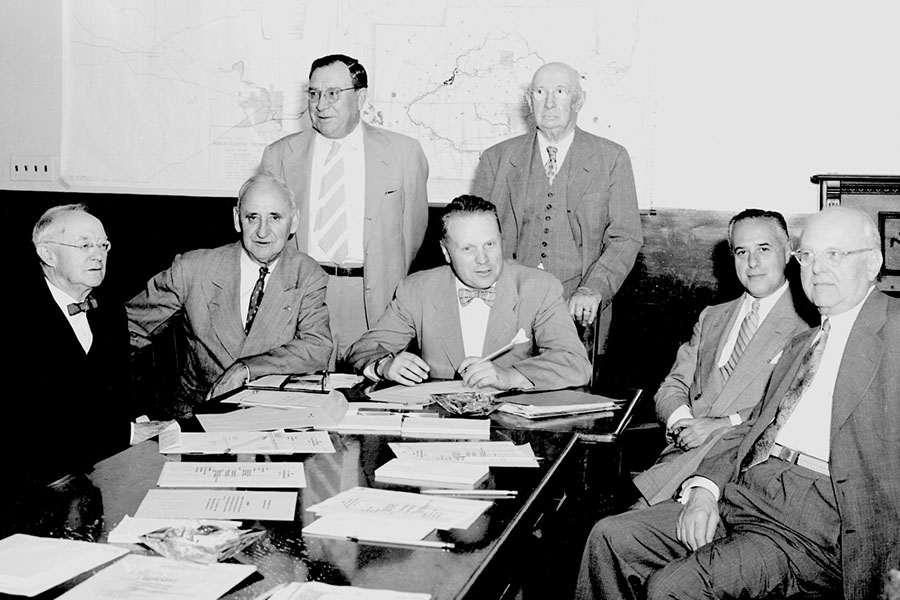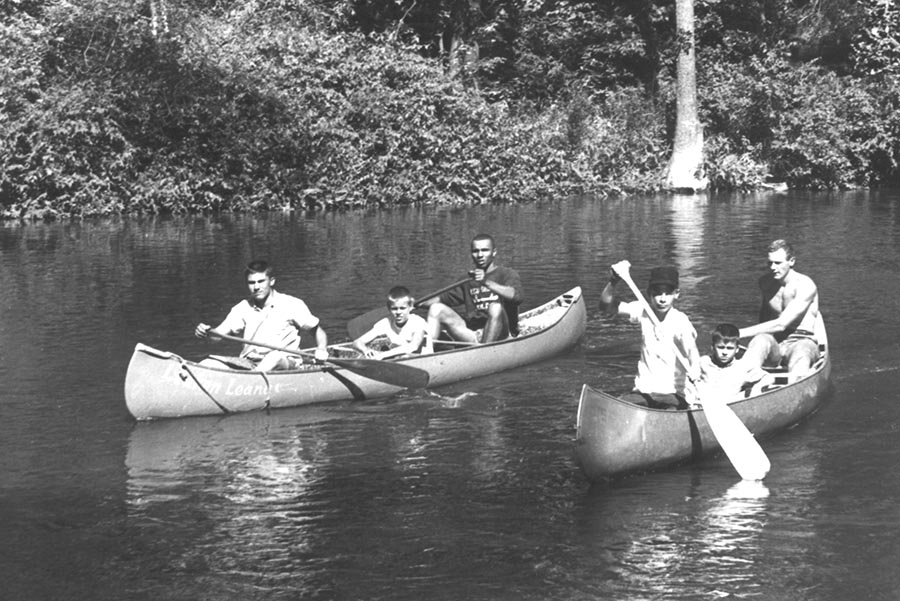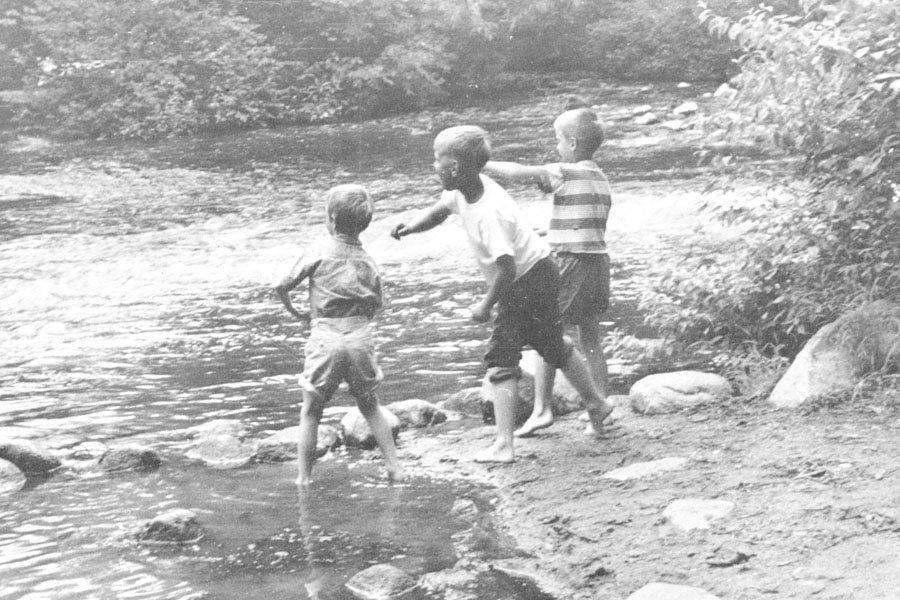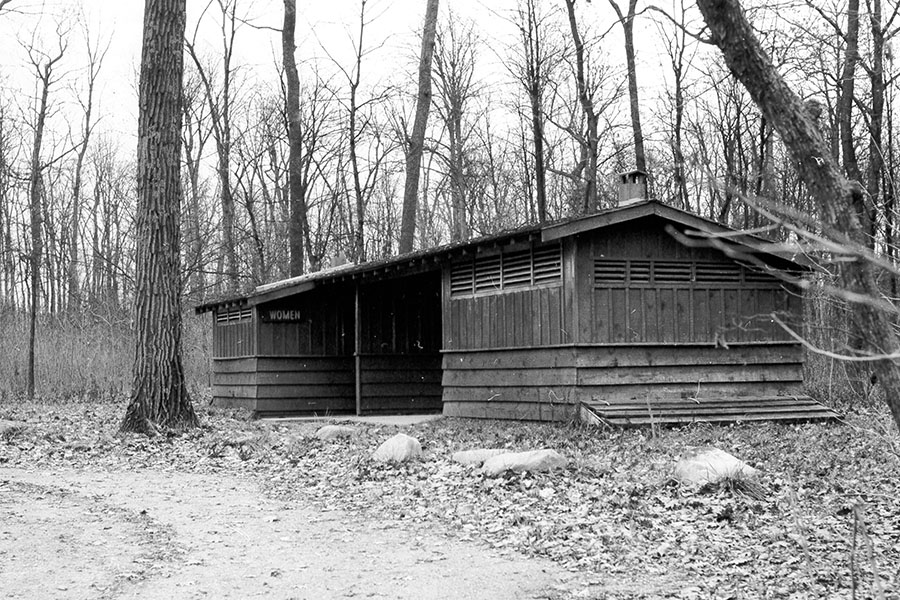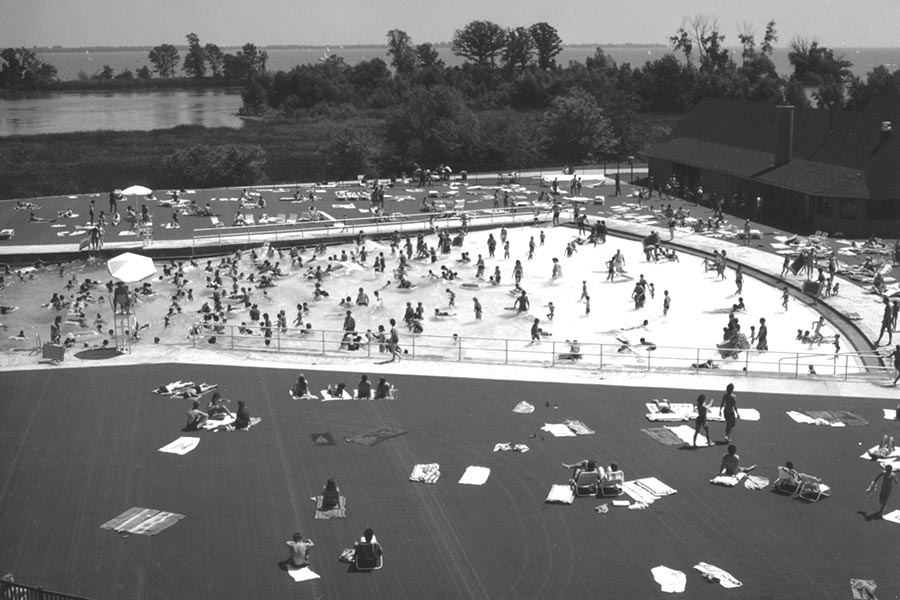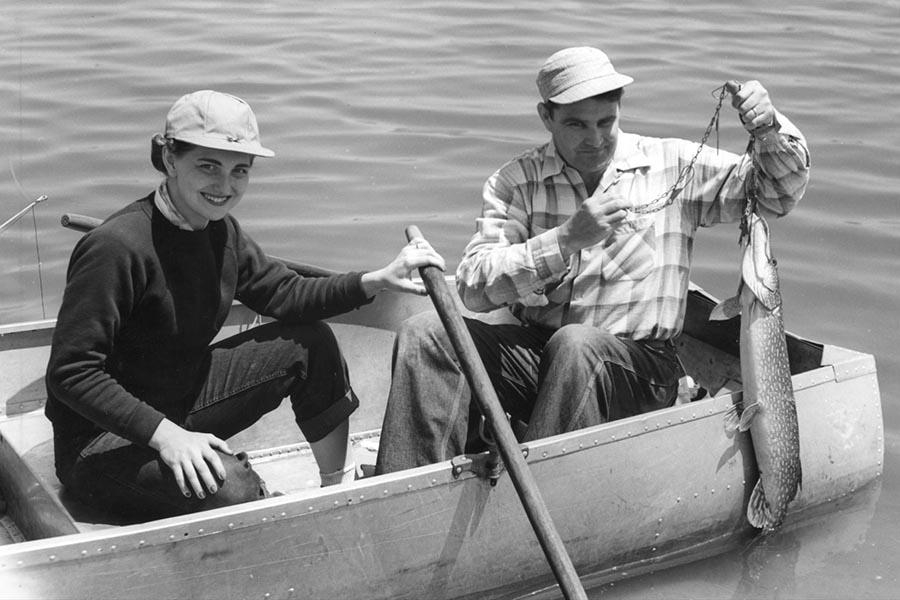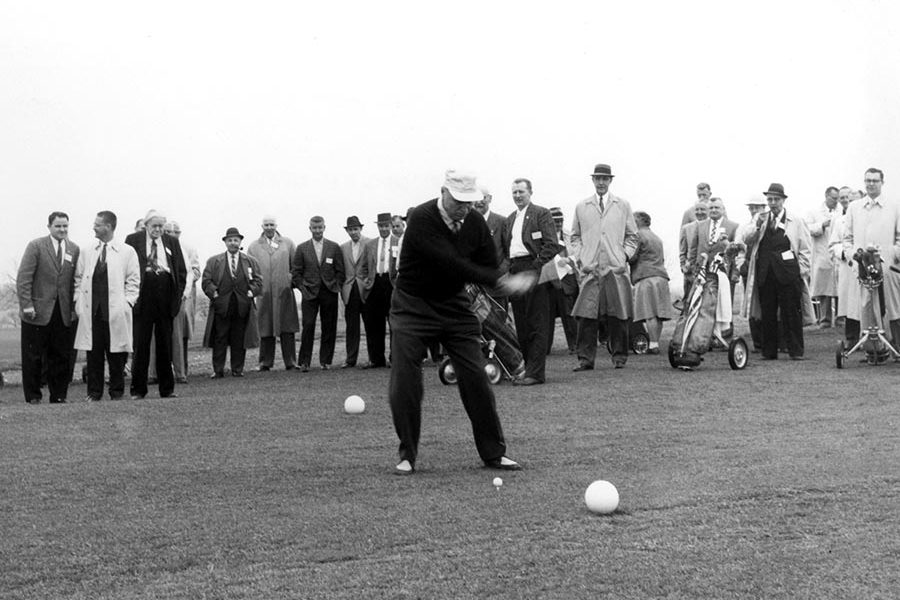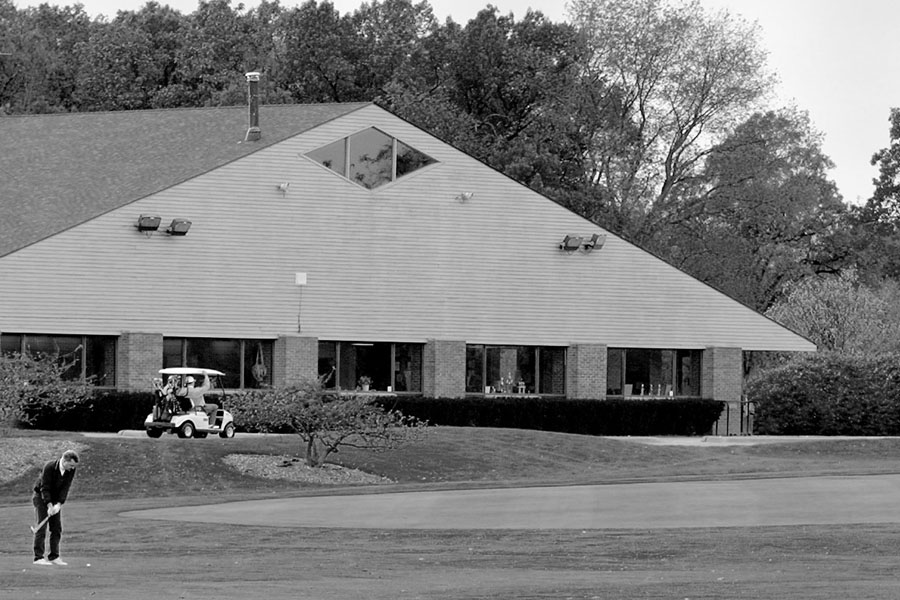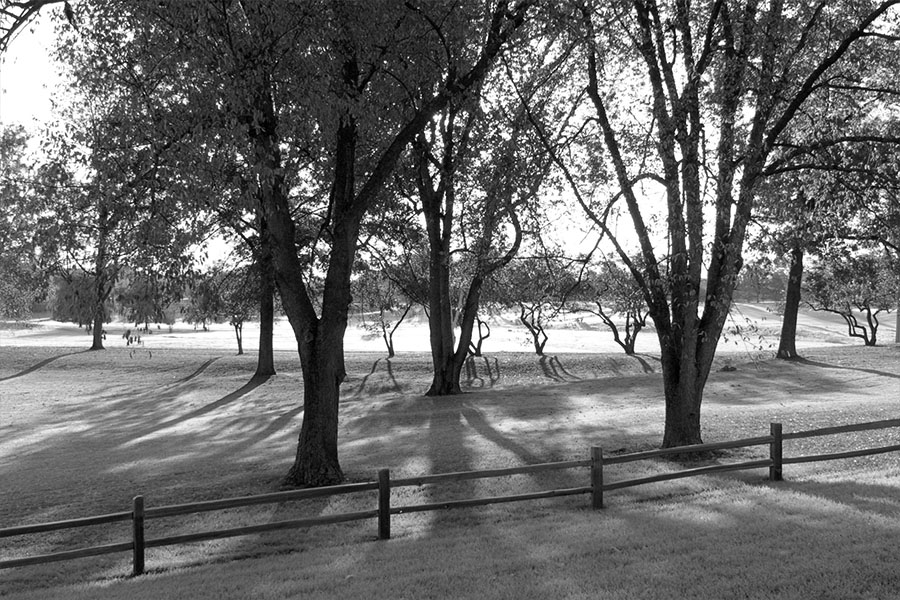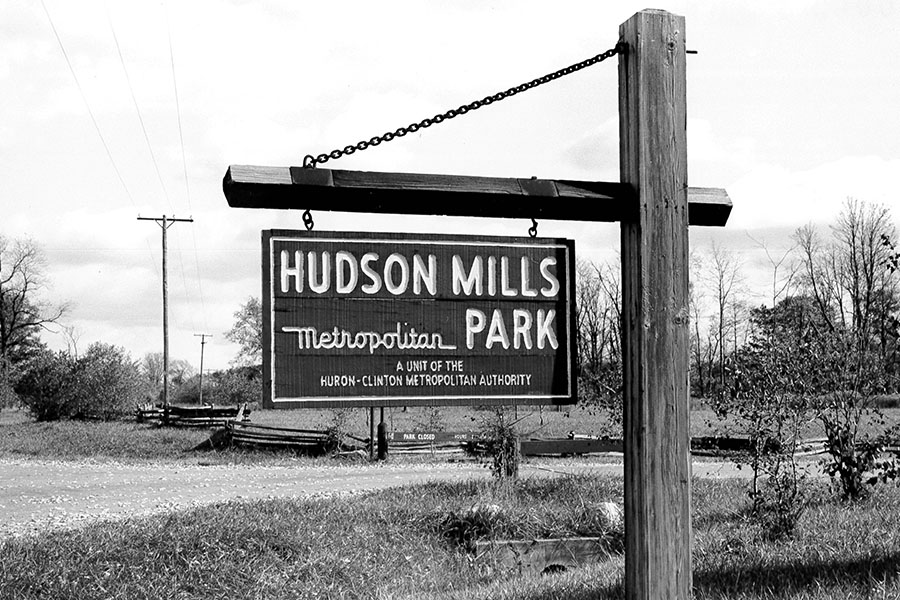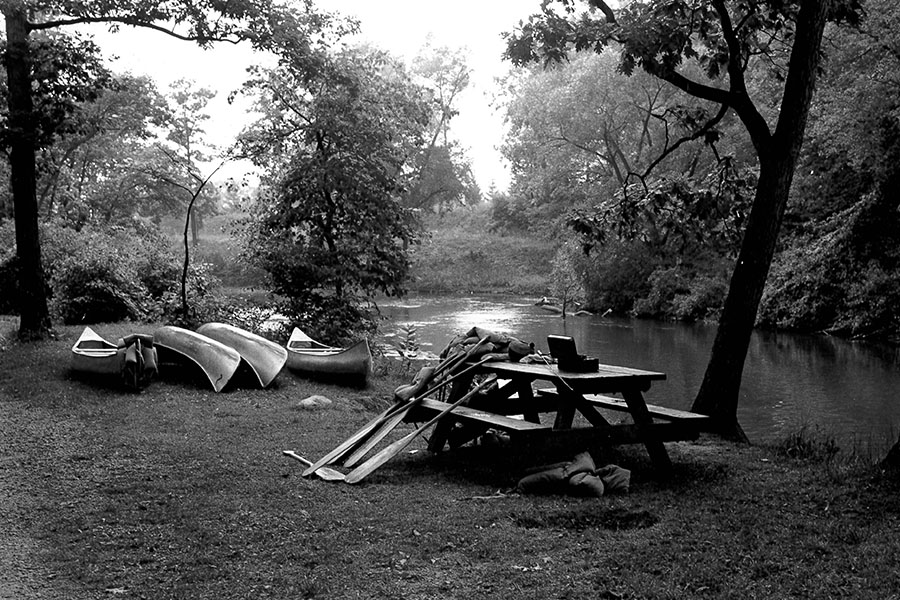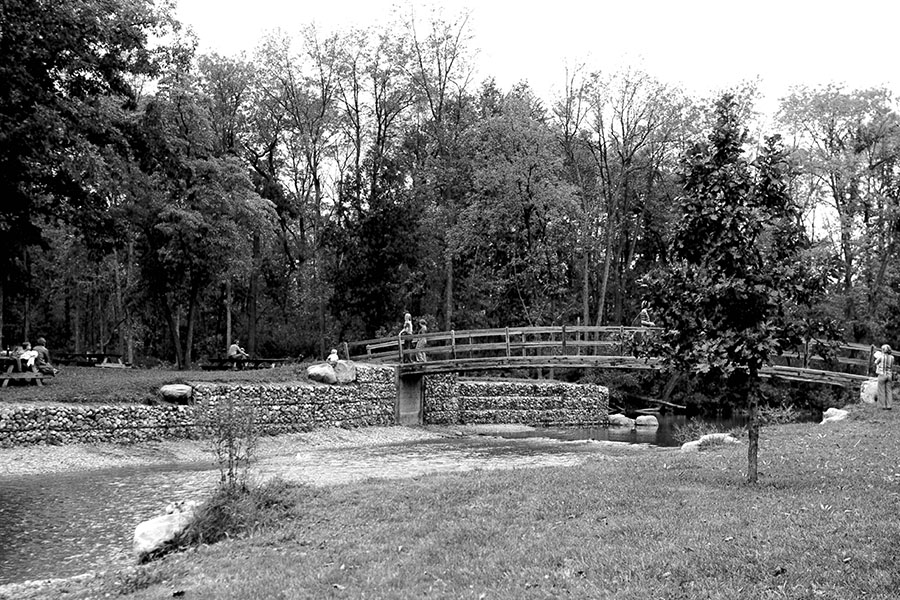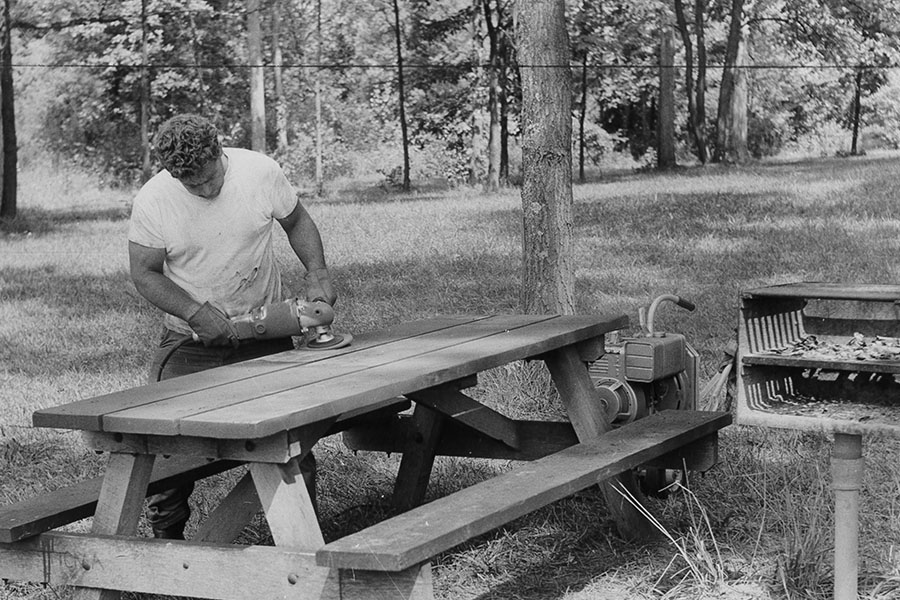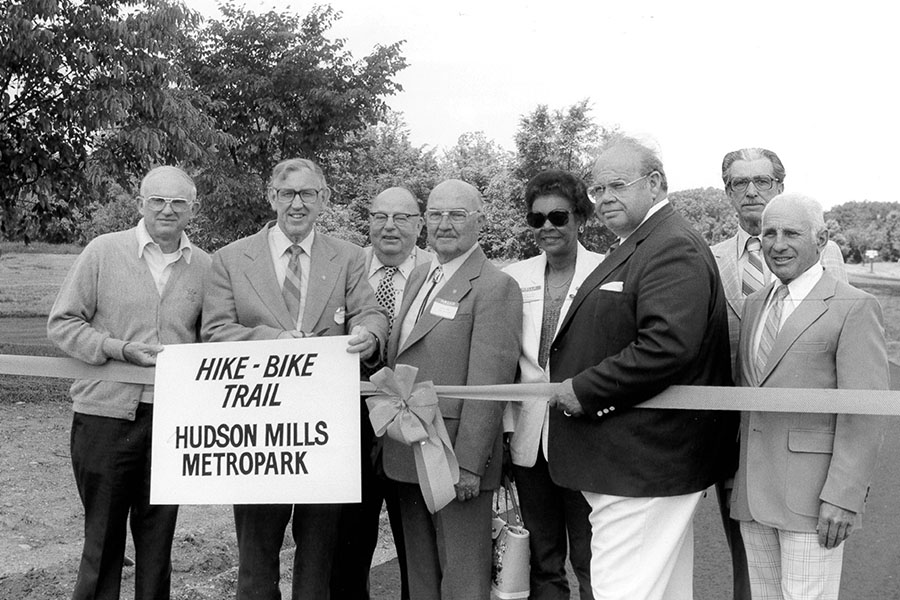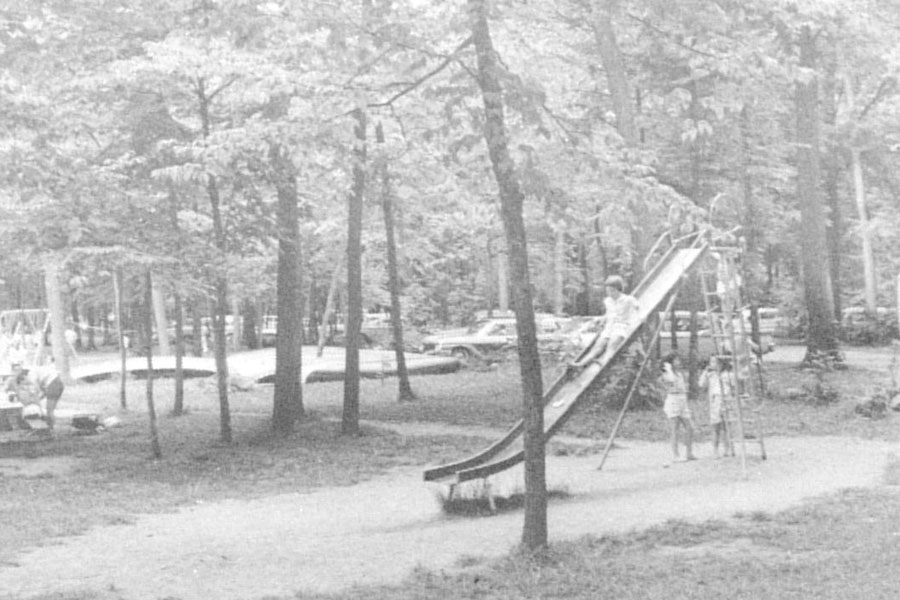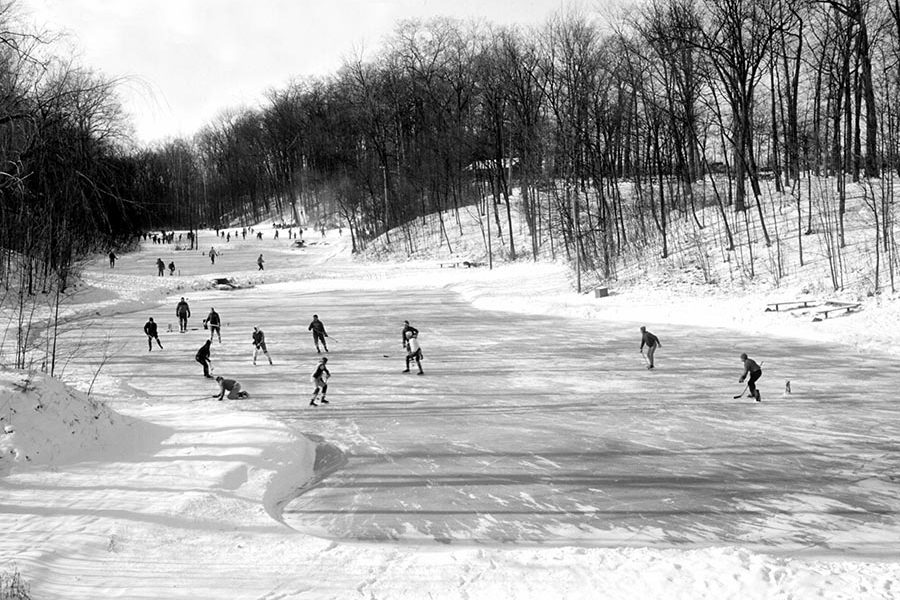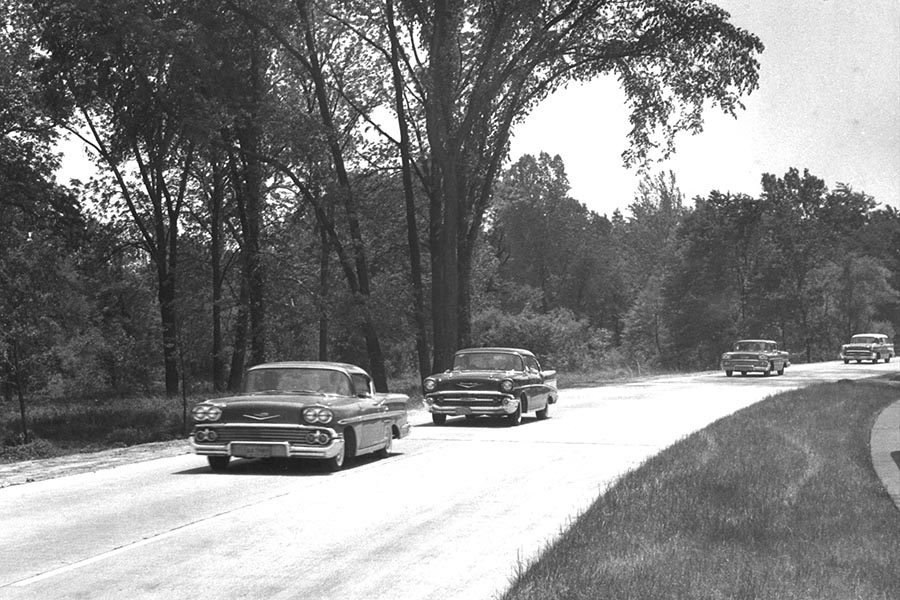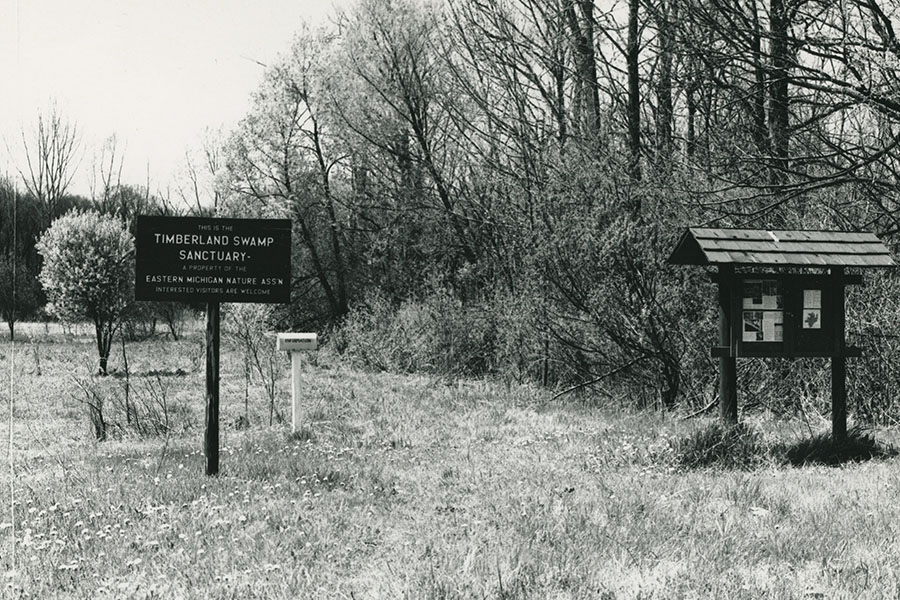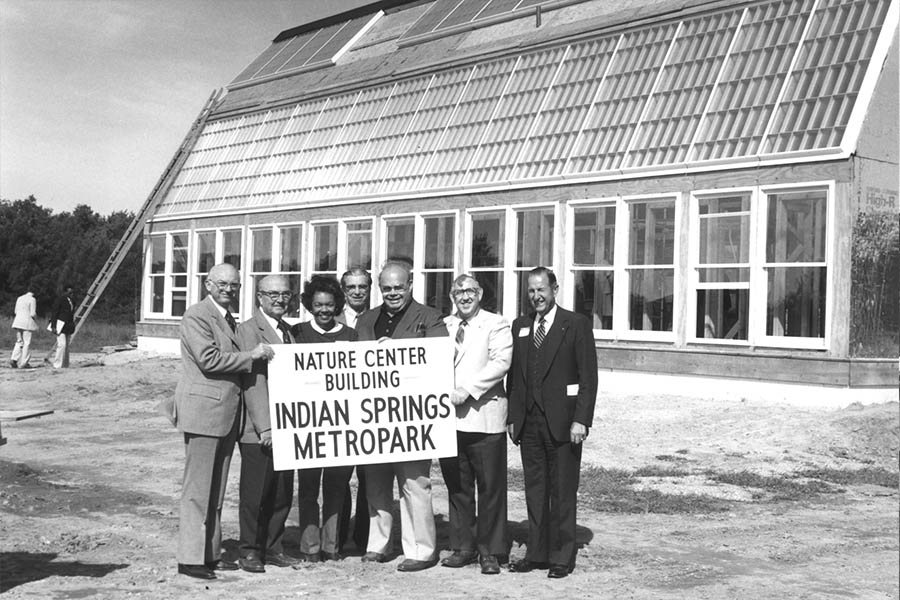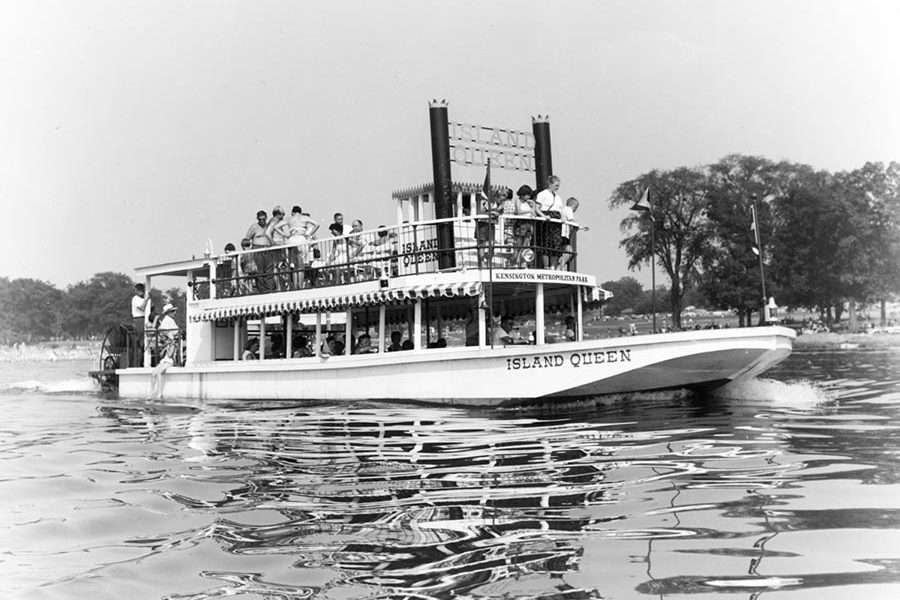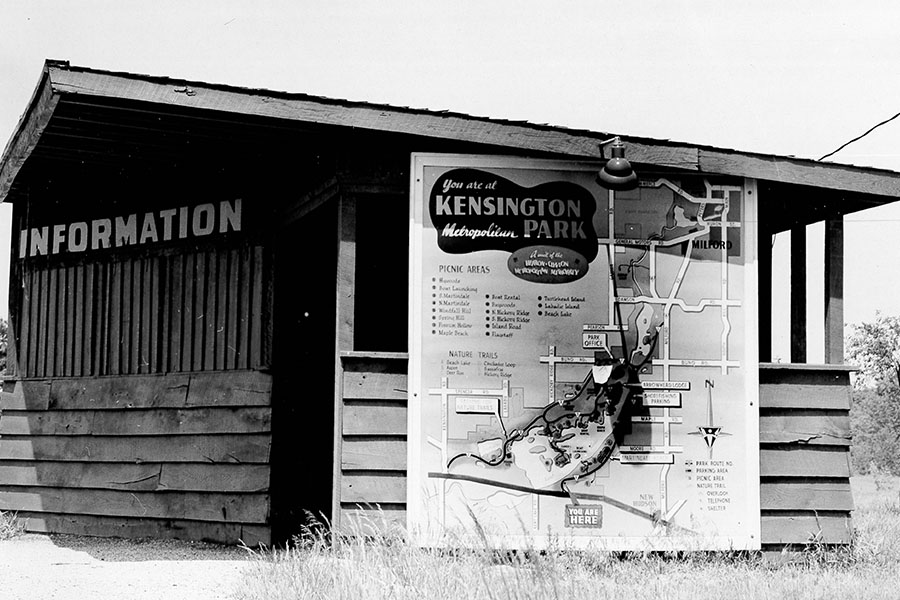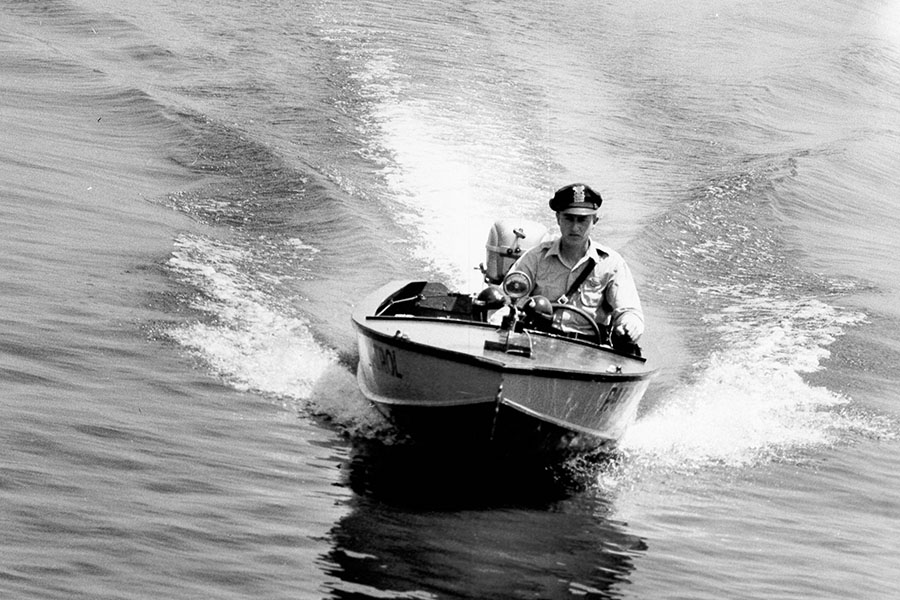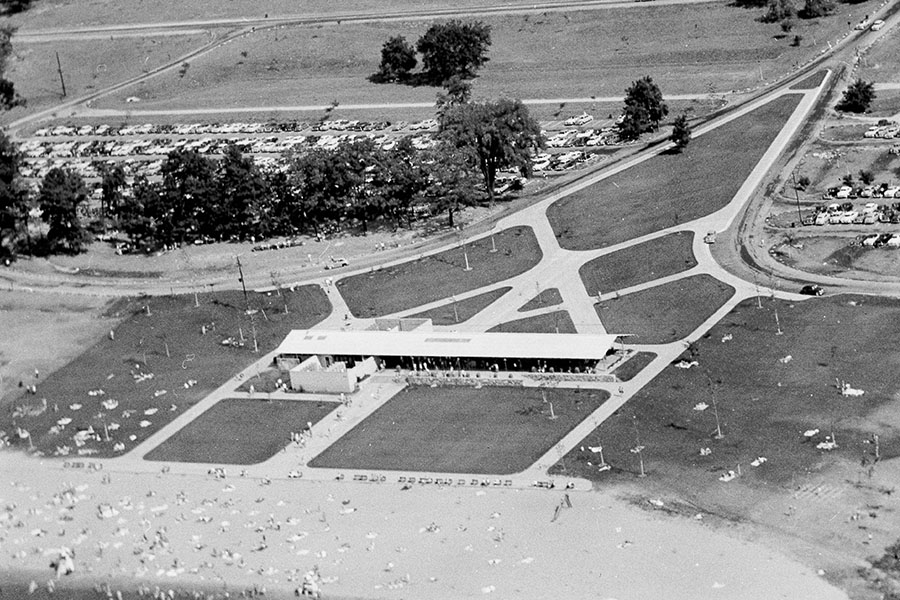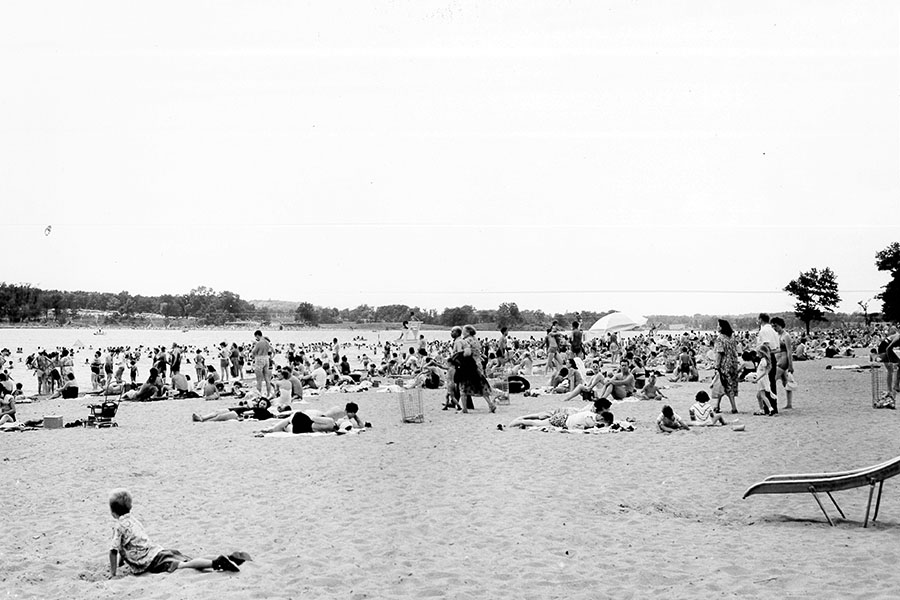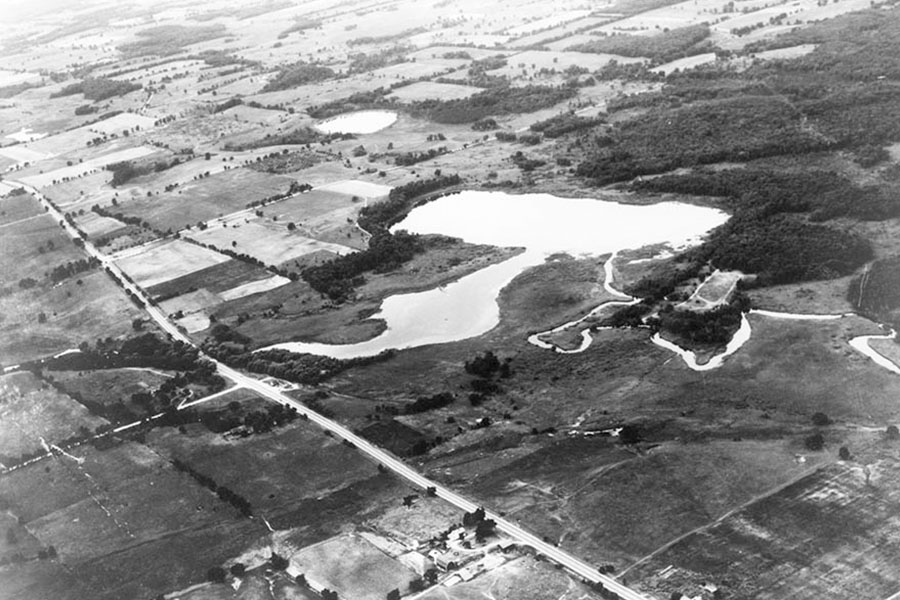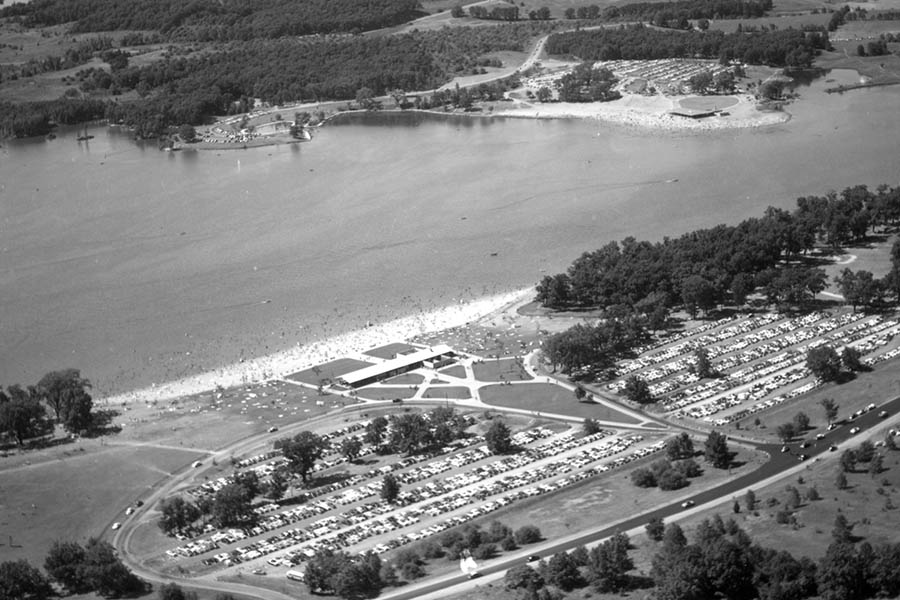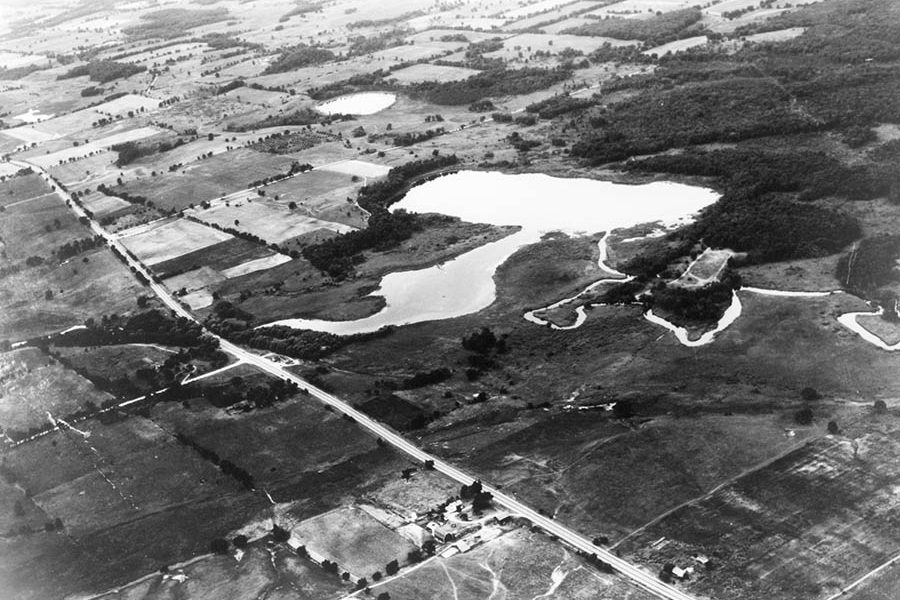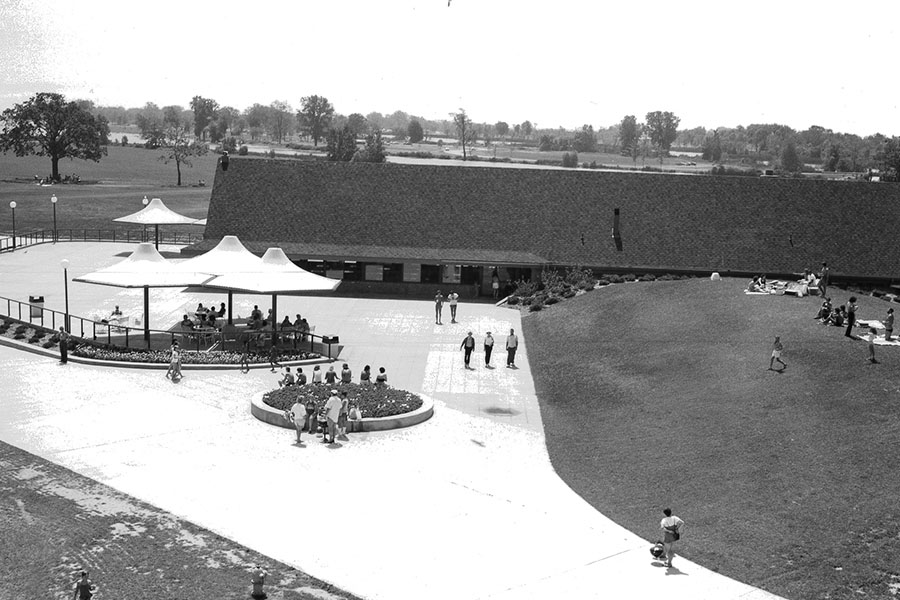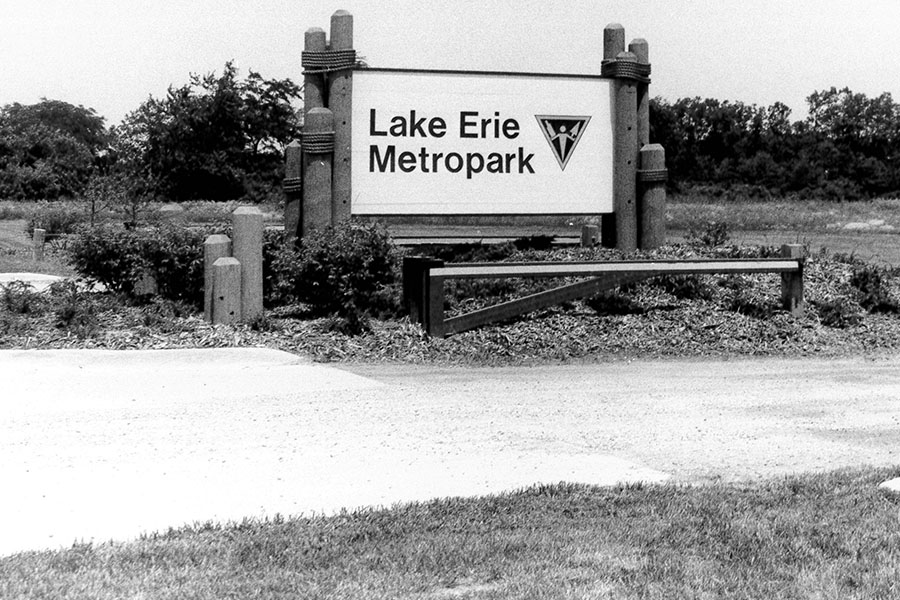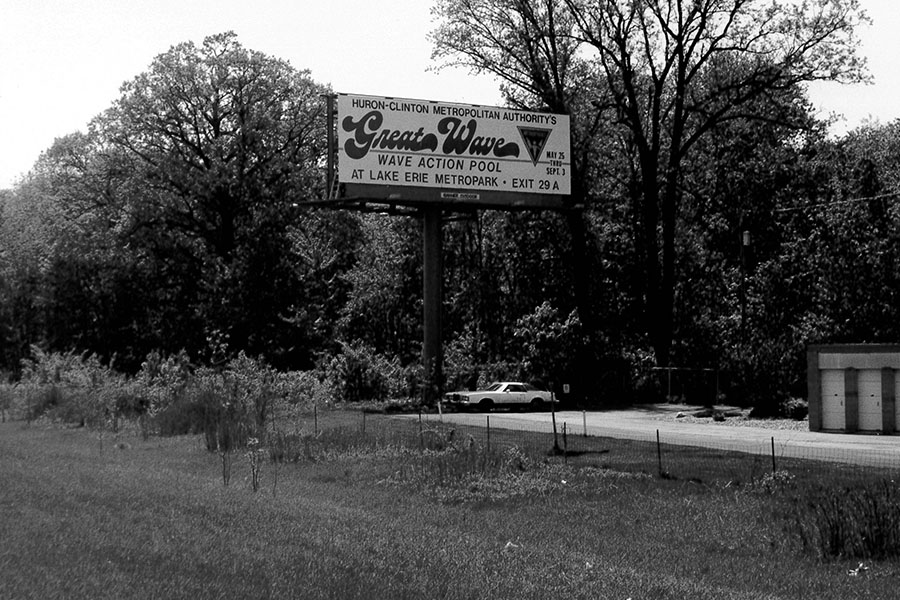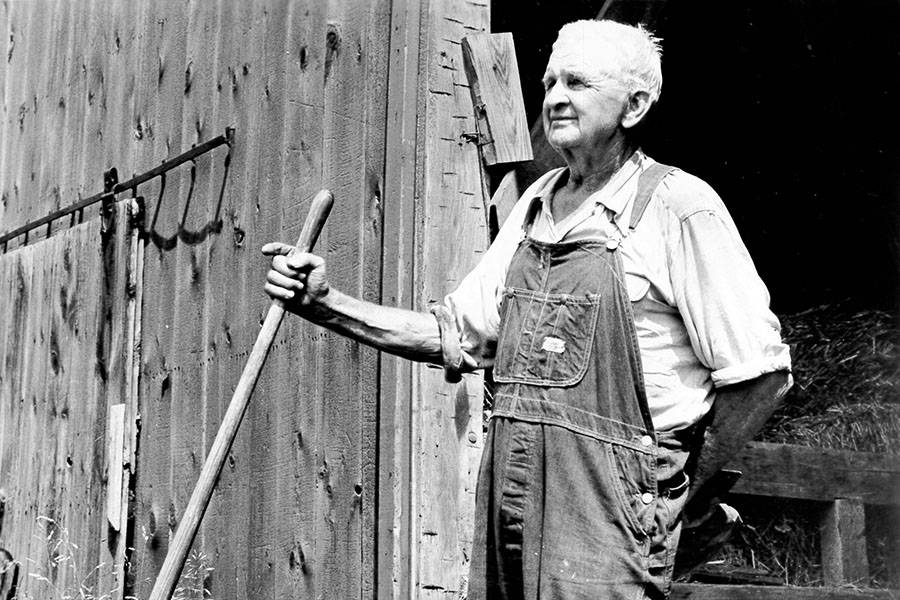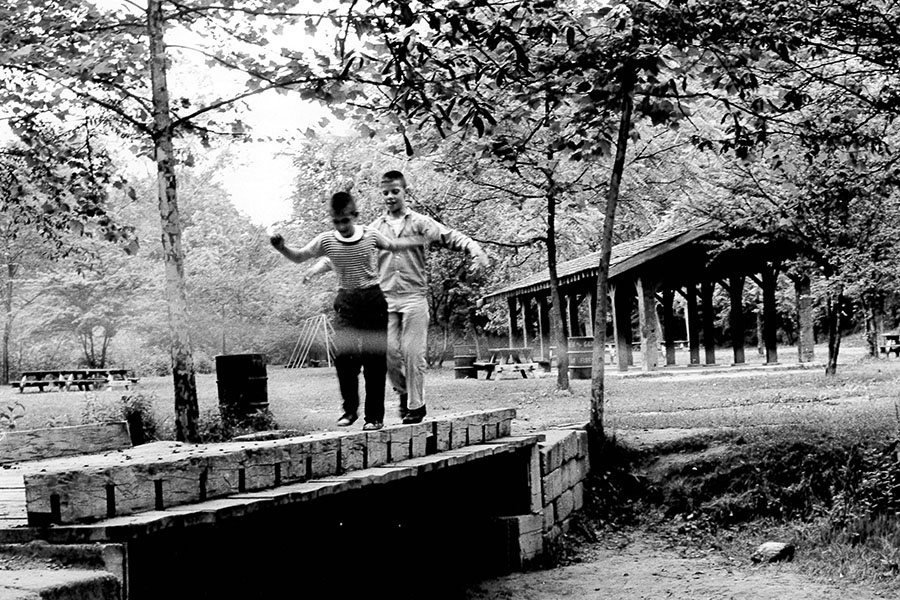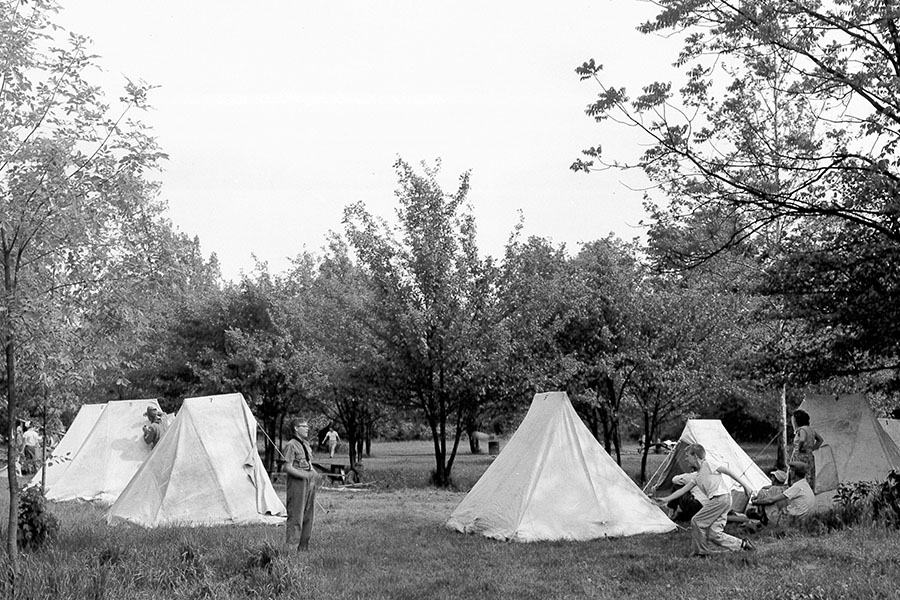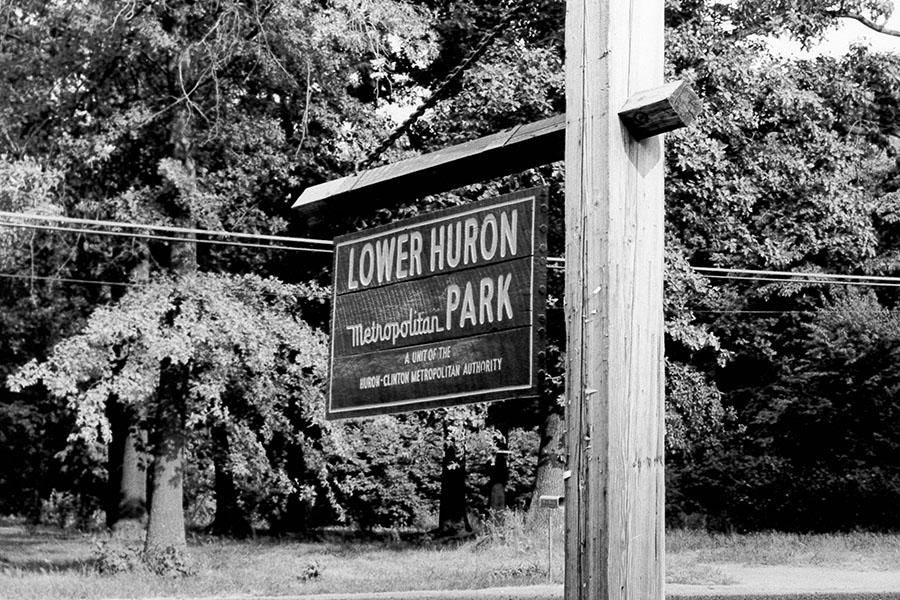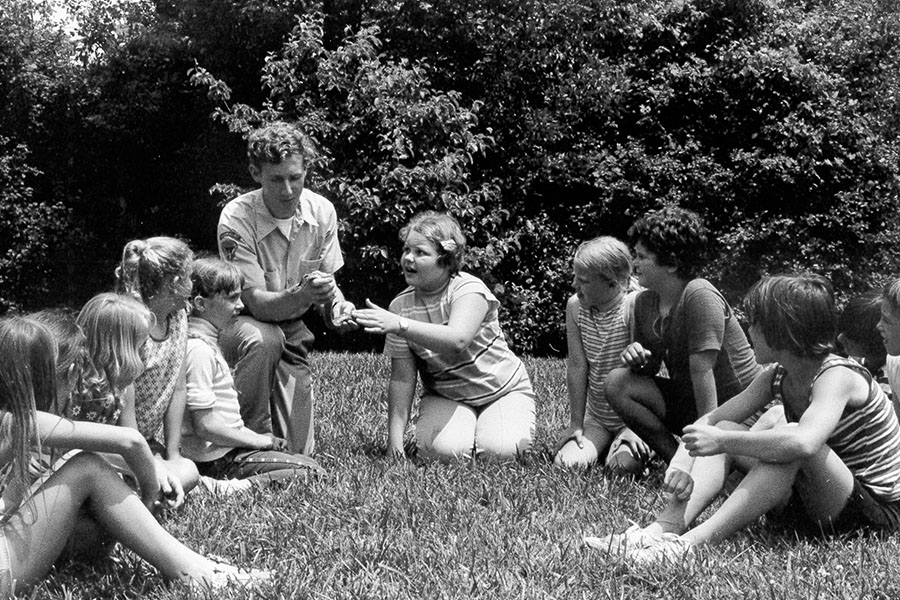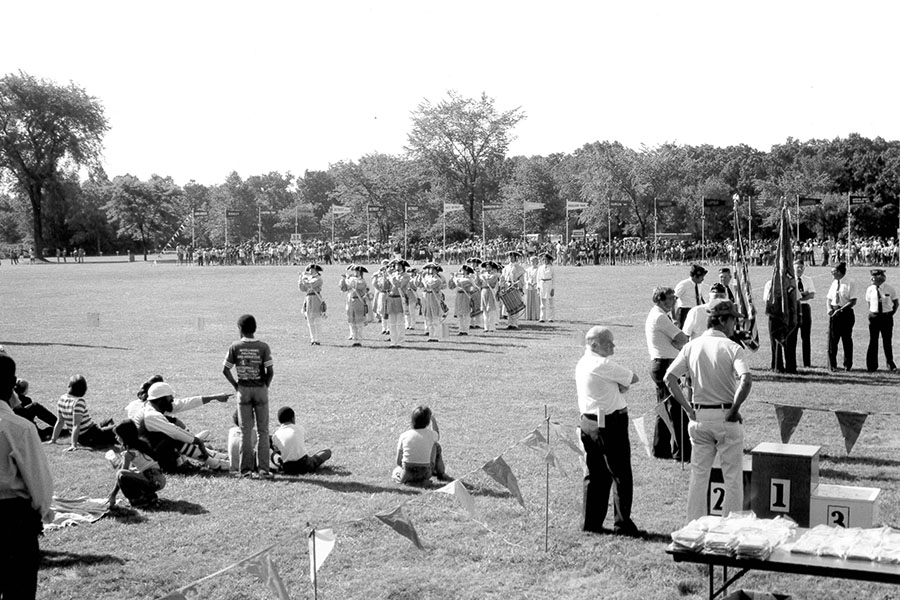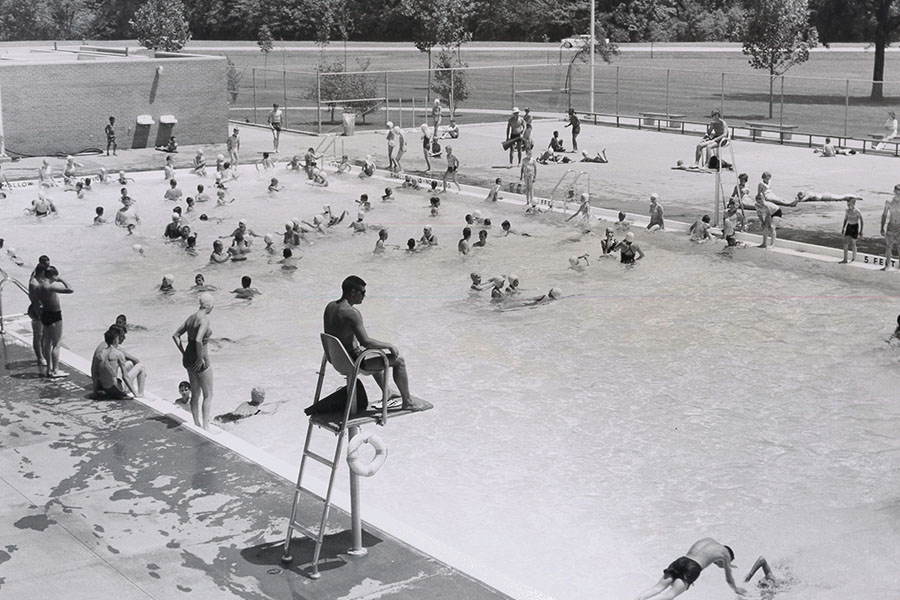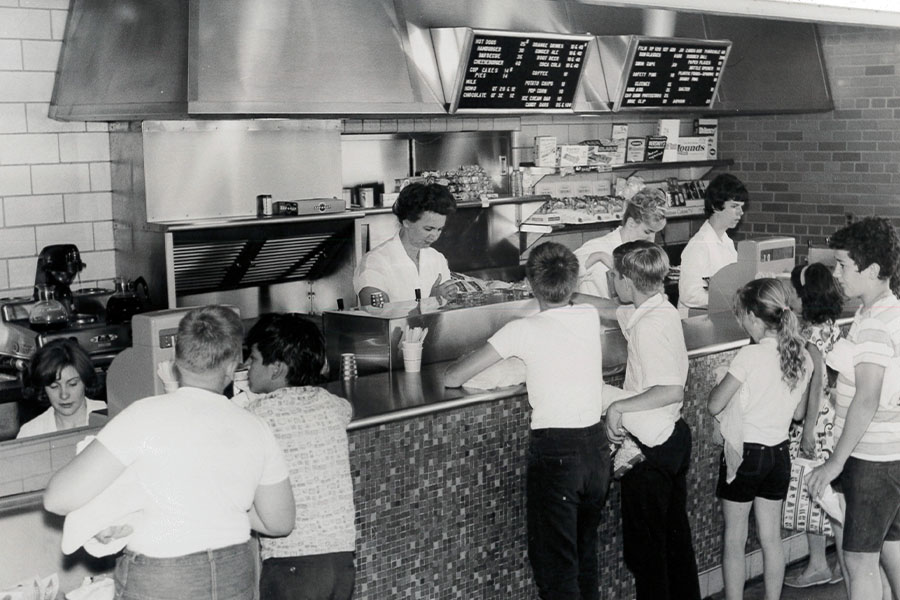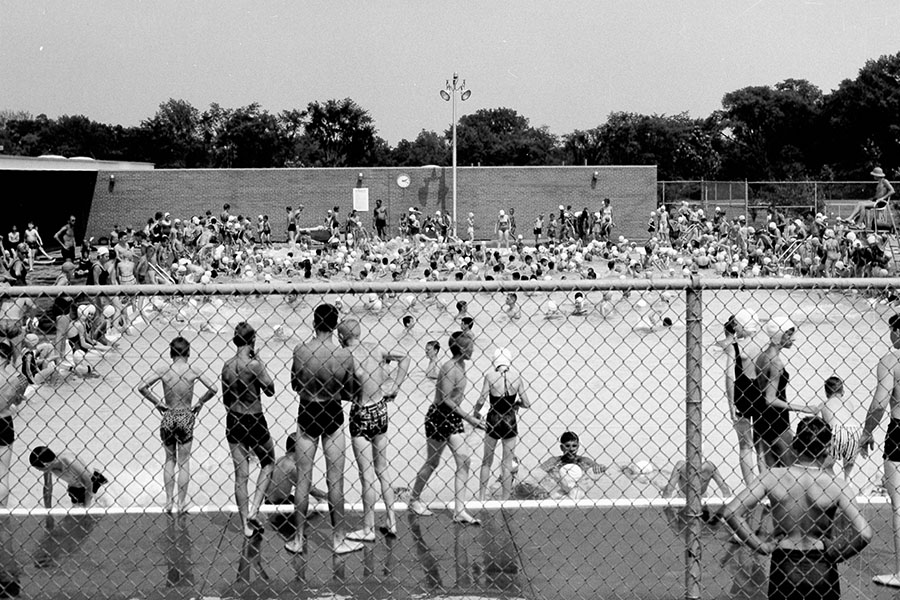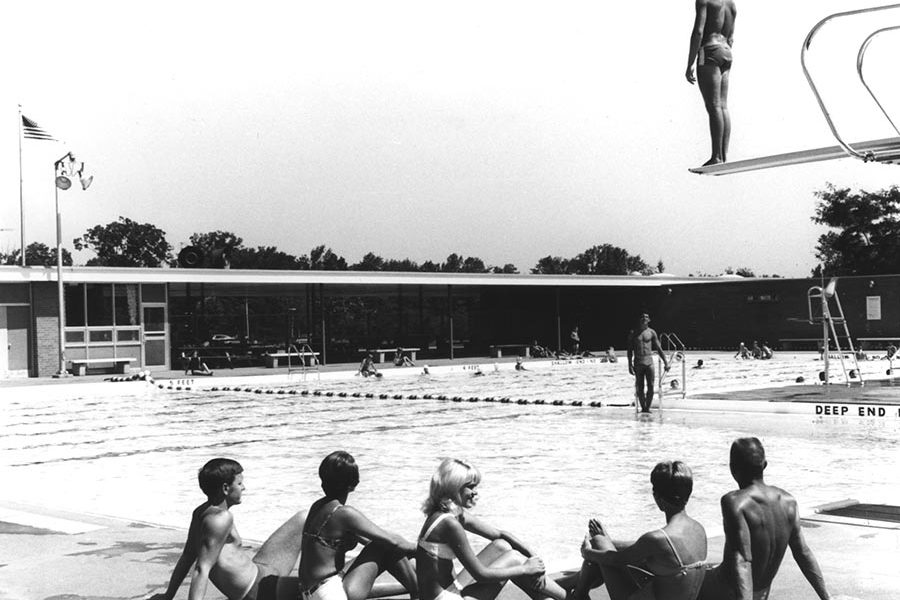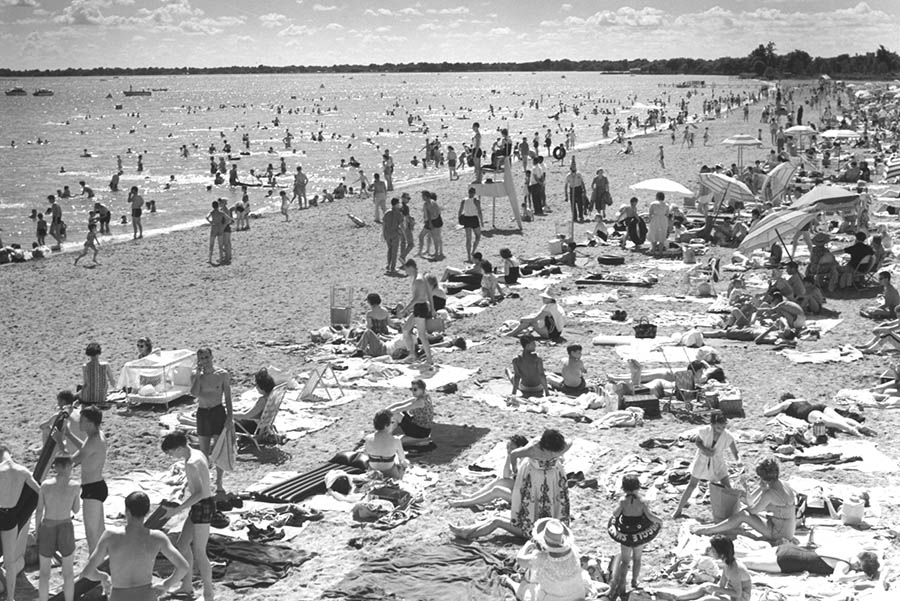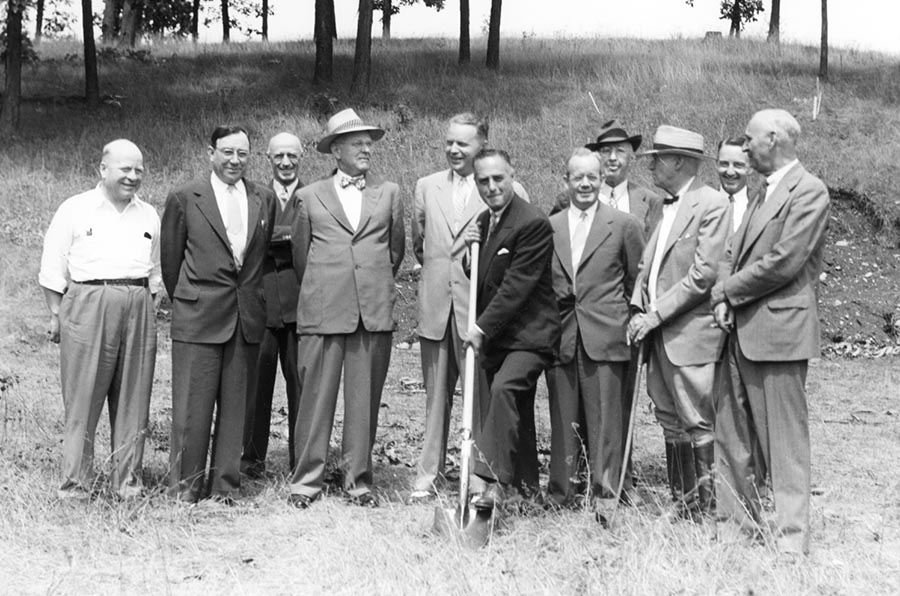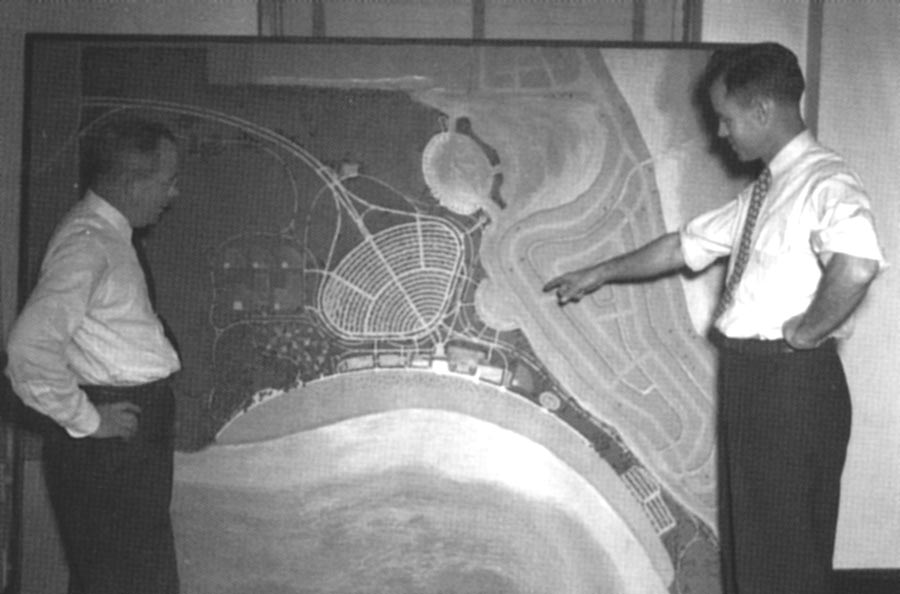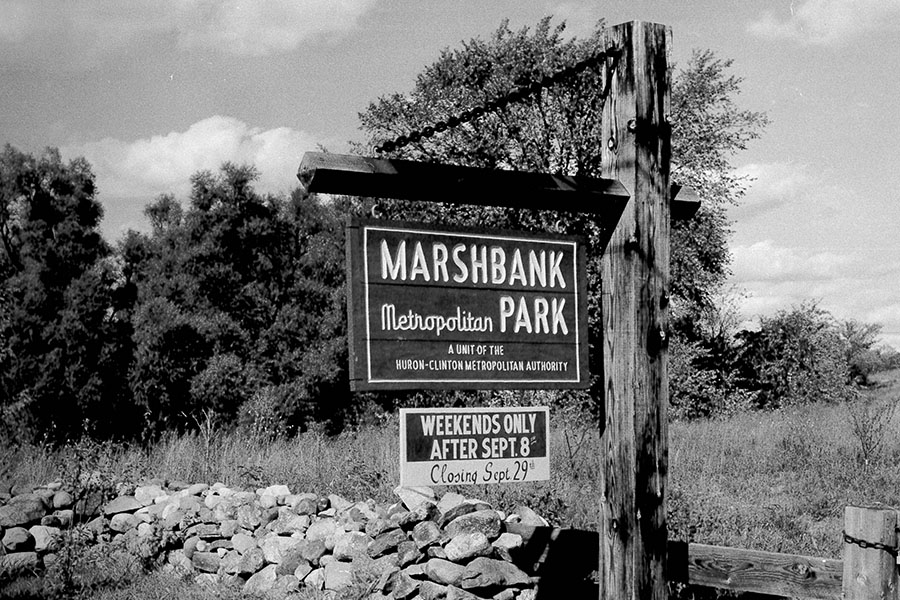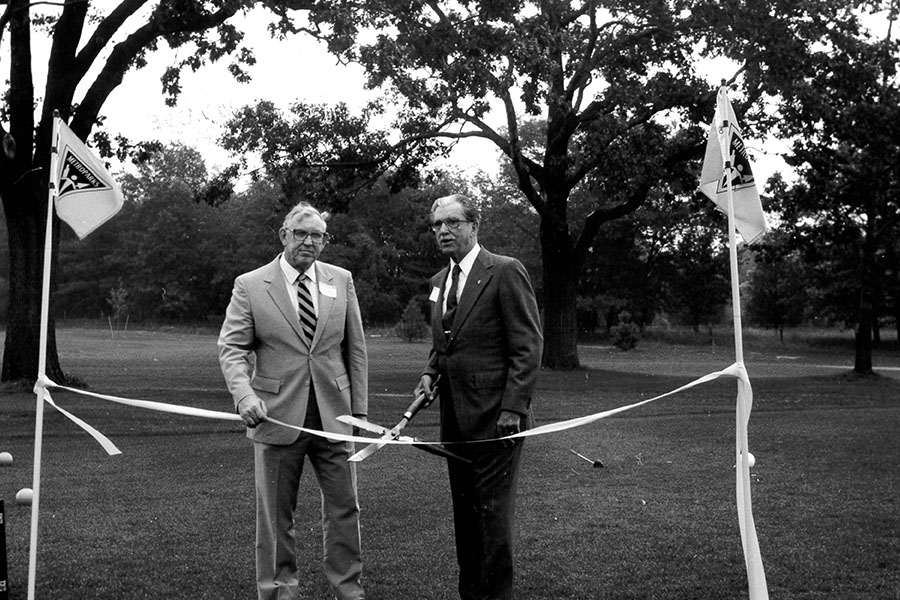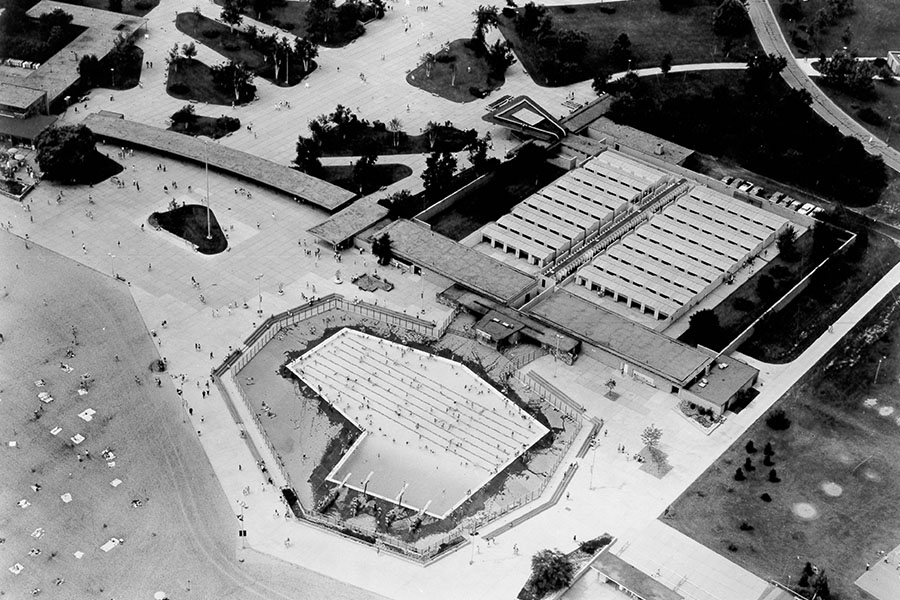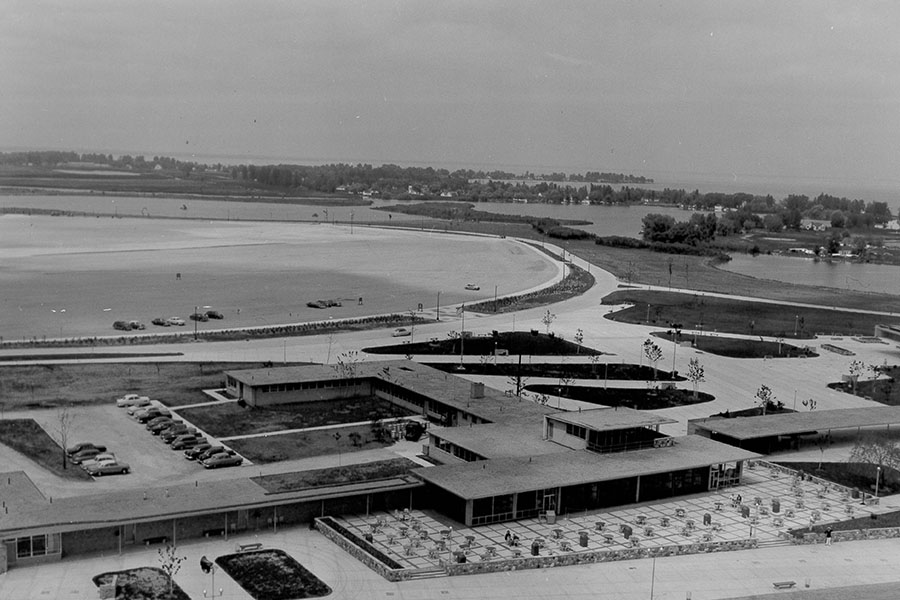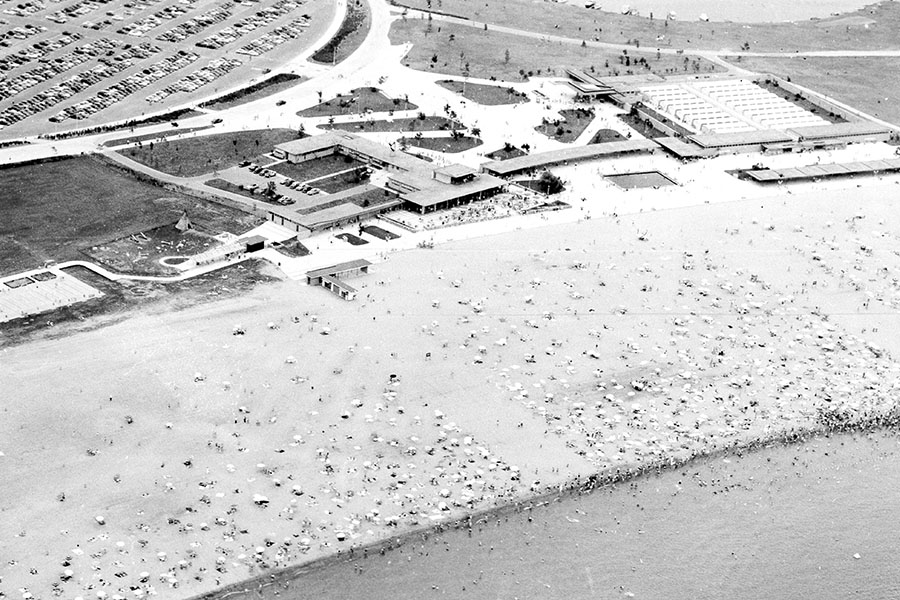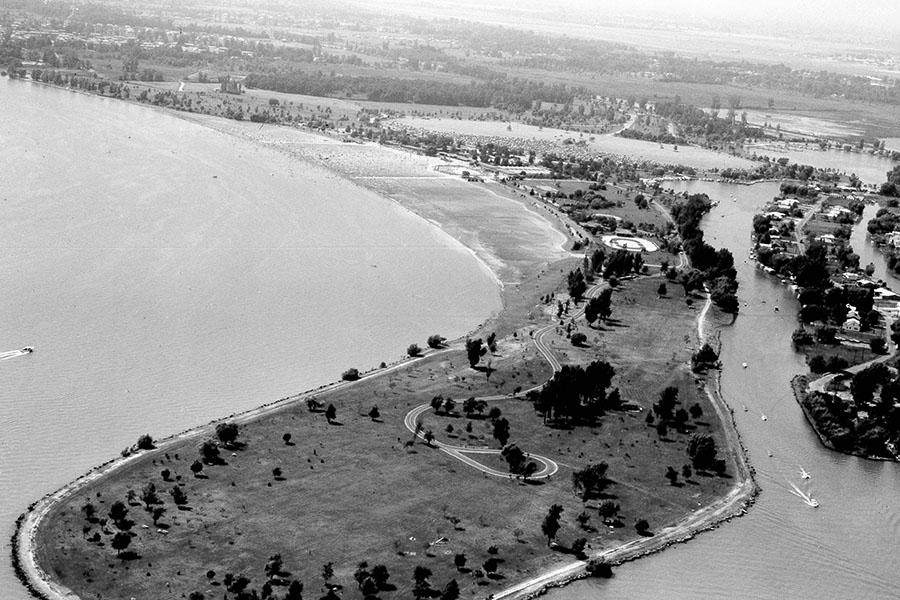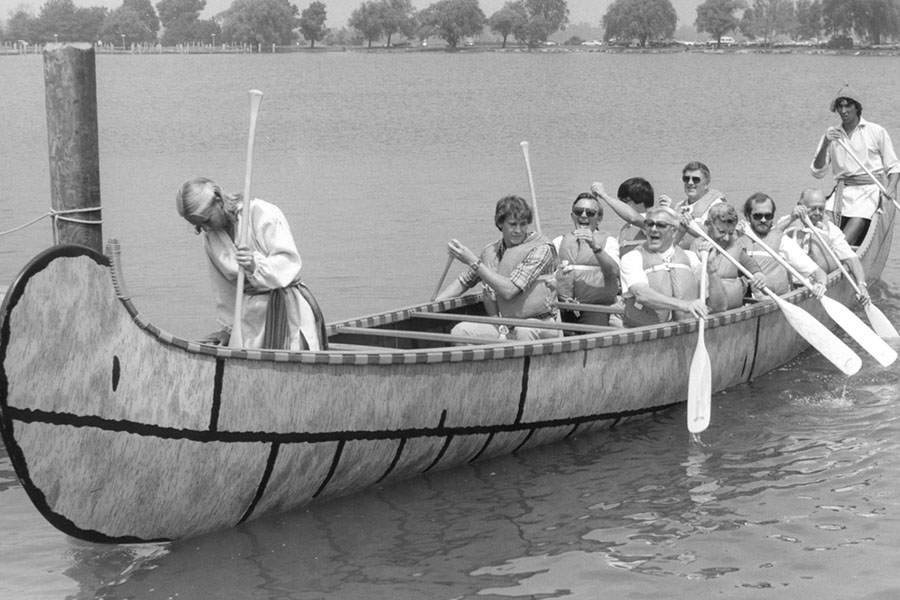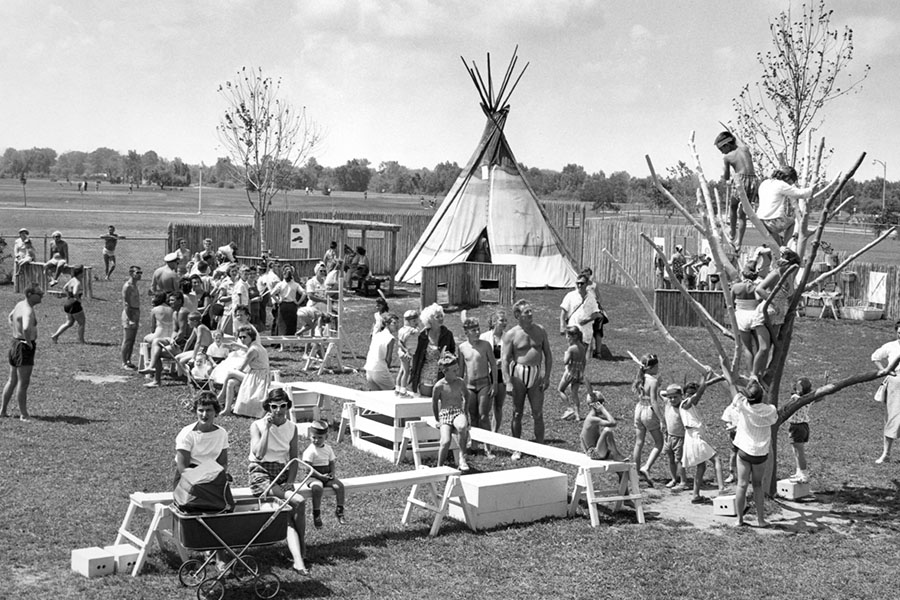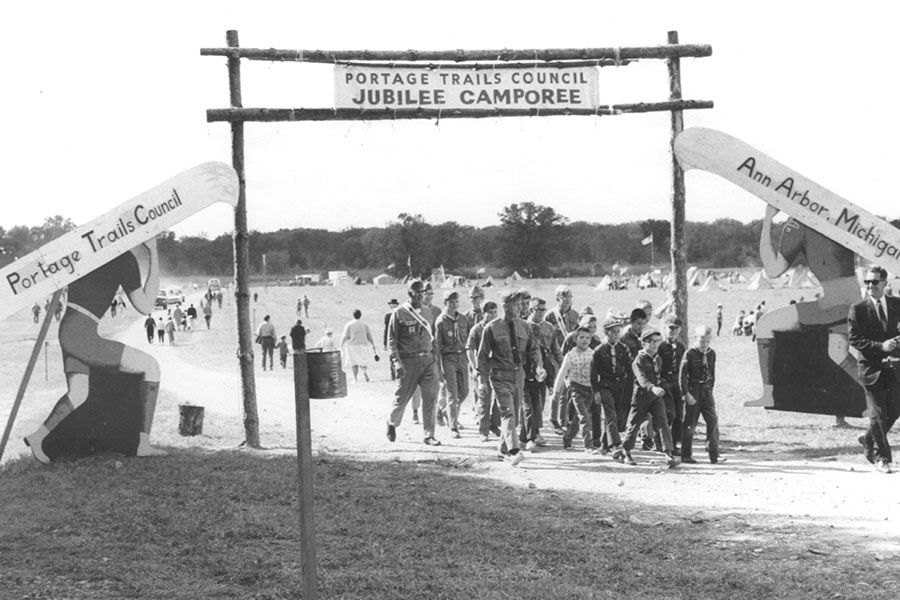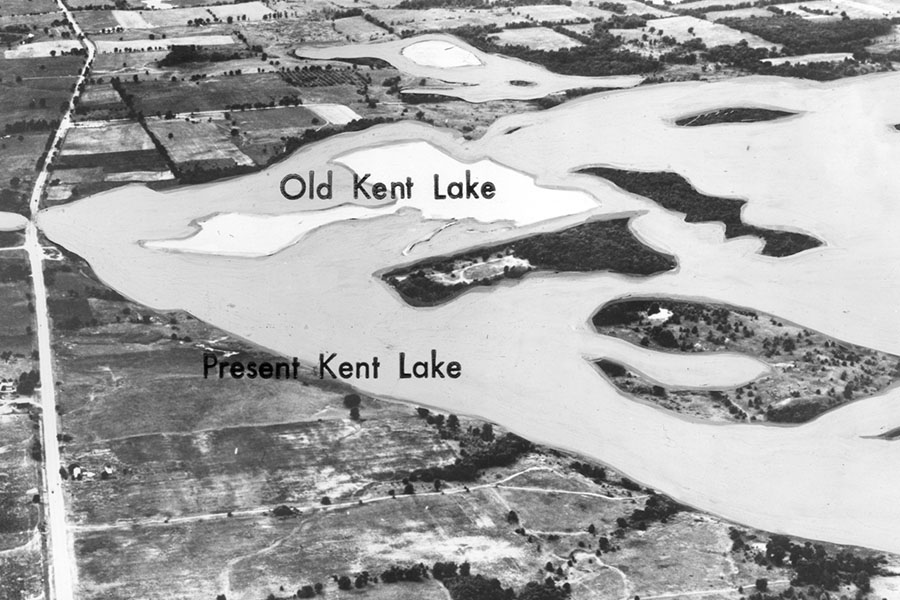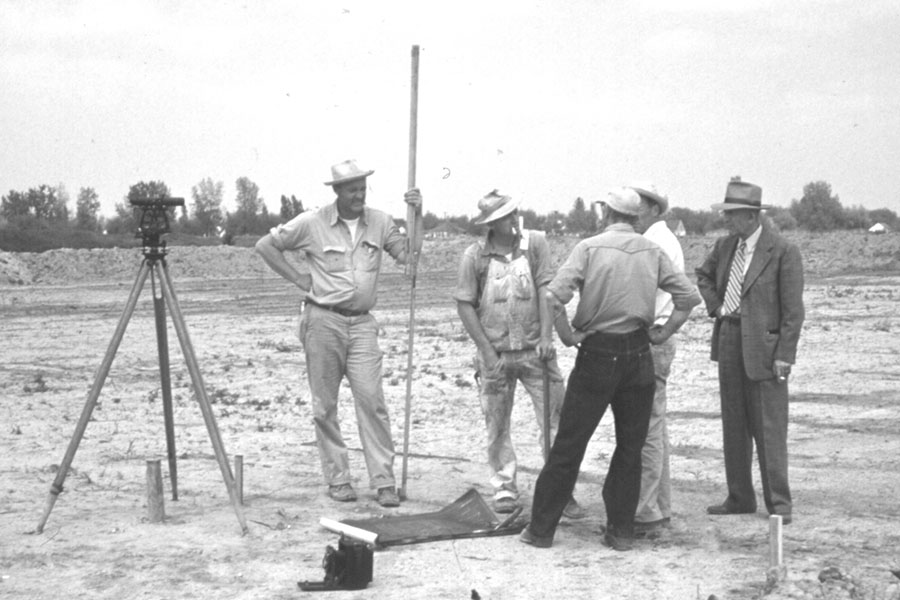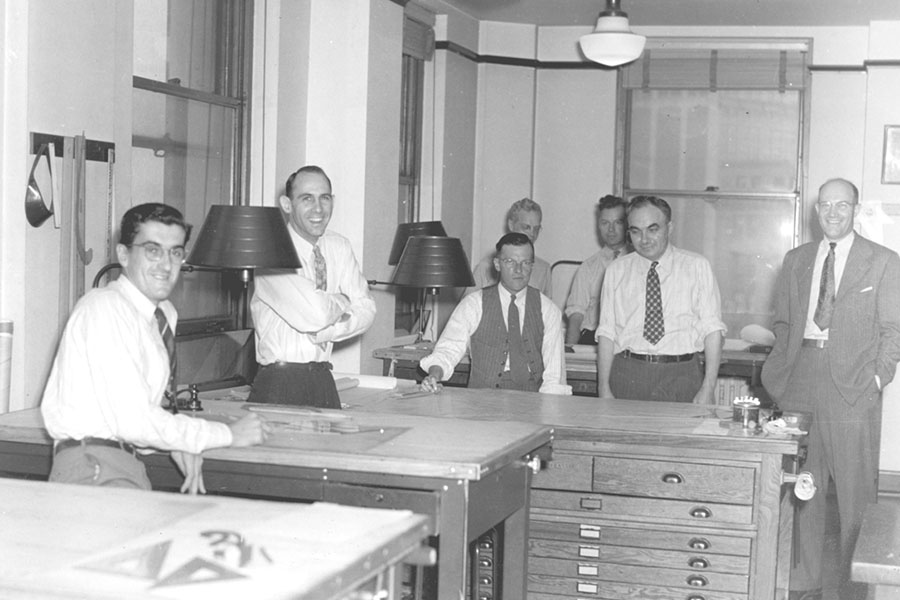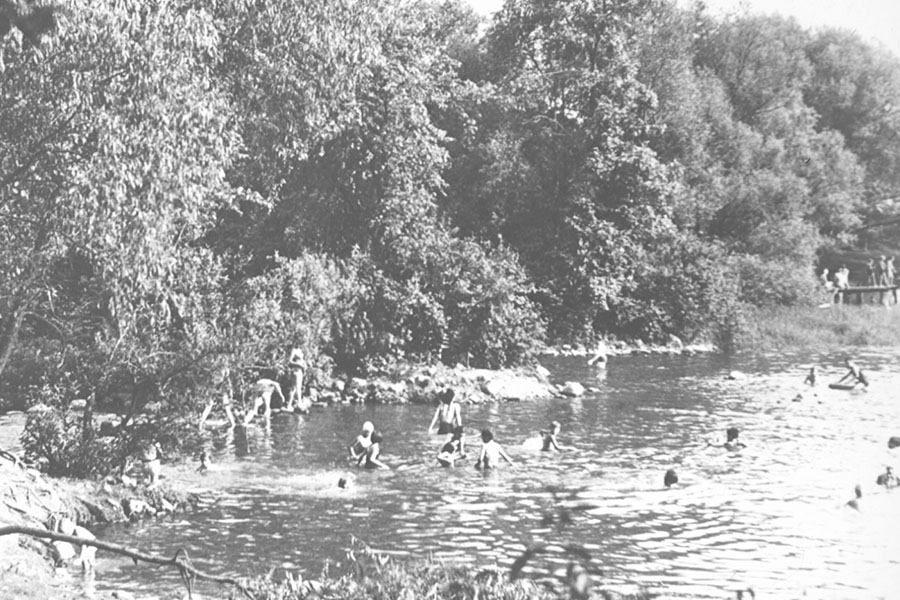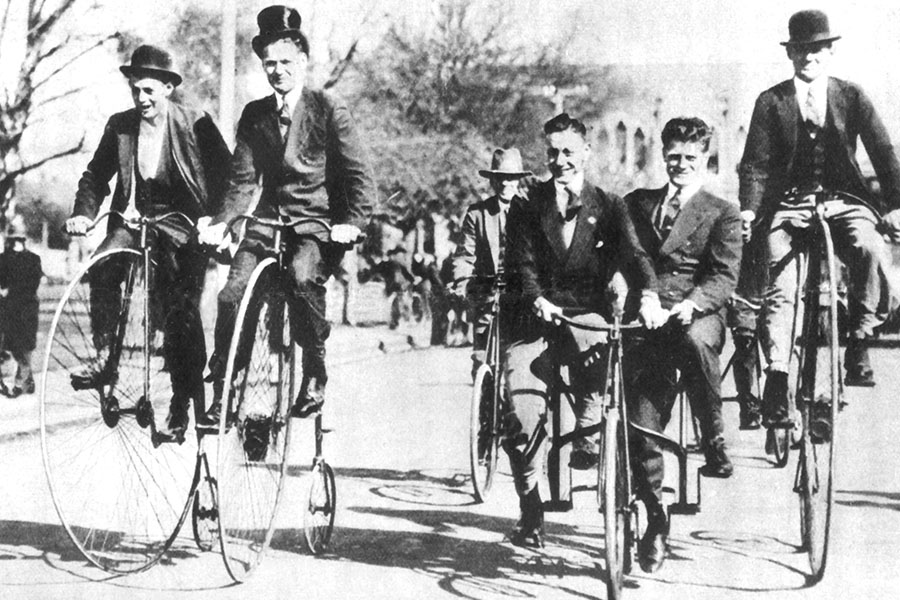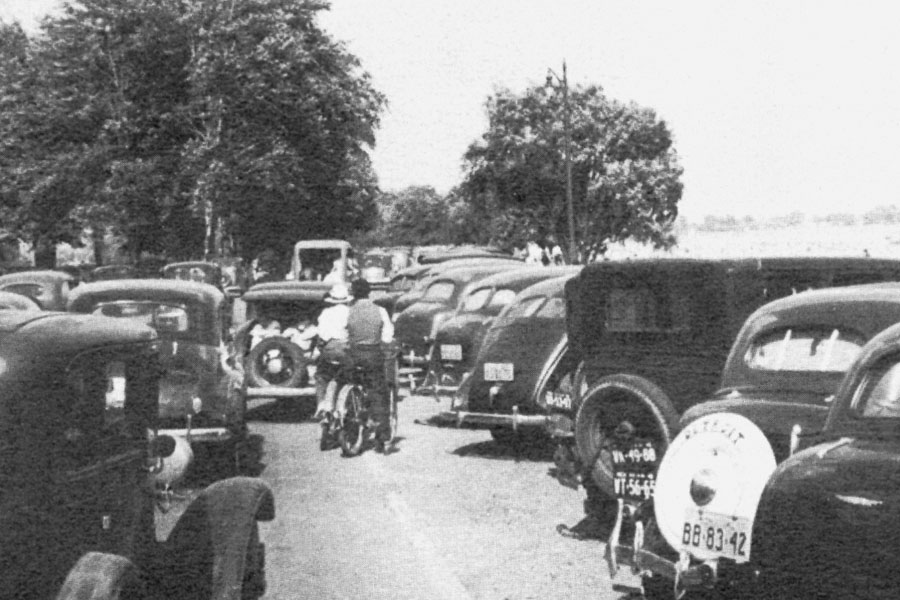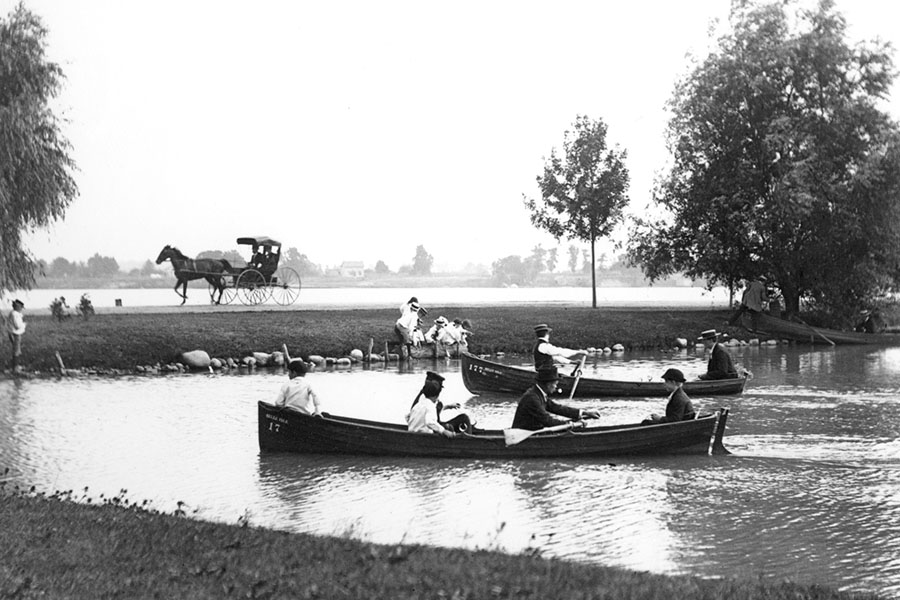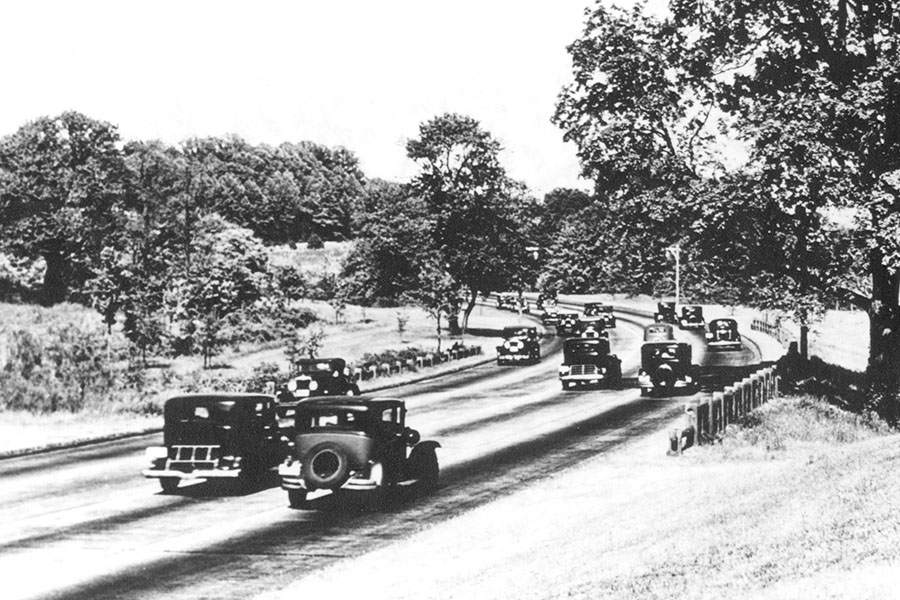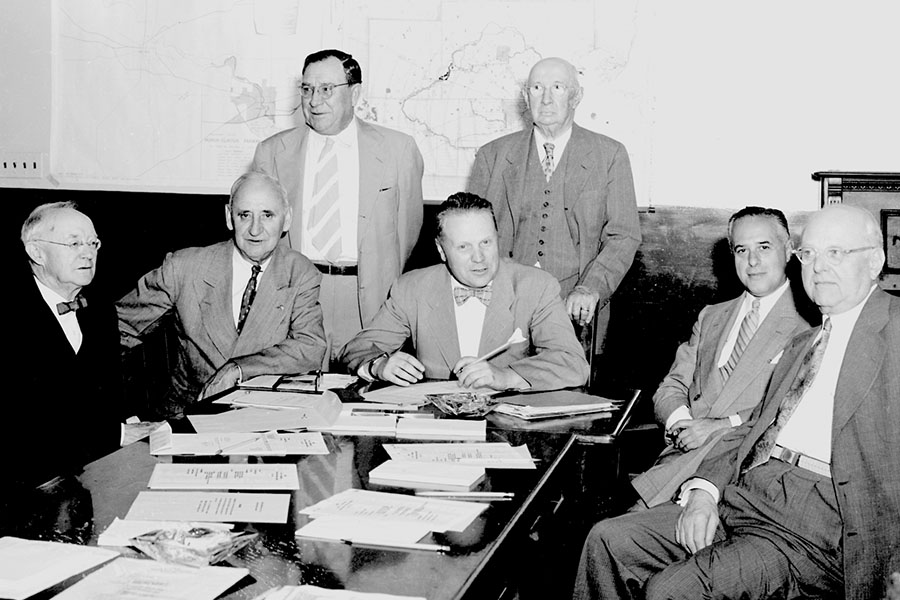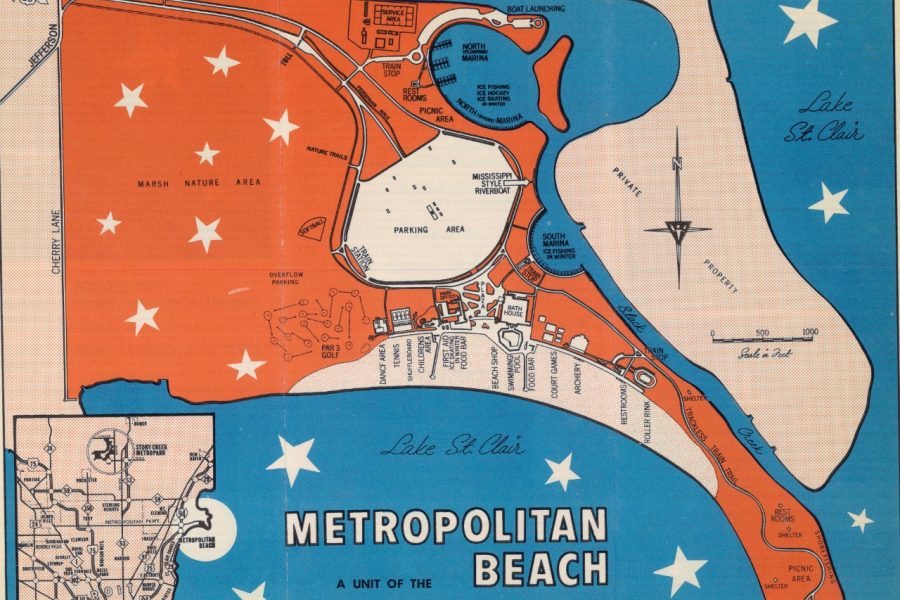LEARN HOW THEY CAME TO BE.
The Huron-Clinton Metroparks are more than just one of the nation’s premier metropolitan park systems. They’re a precious gift from the people of Southeast Michigan generations ago to the people of Southeast Michigan for generations to come. Learn more about your Metroparks.
About The Metroparks
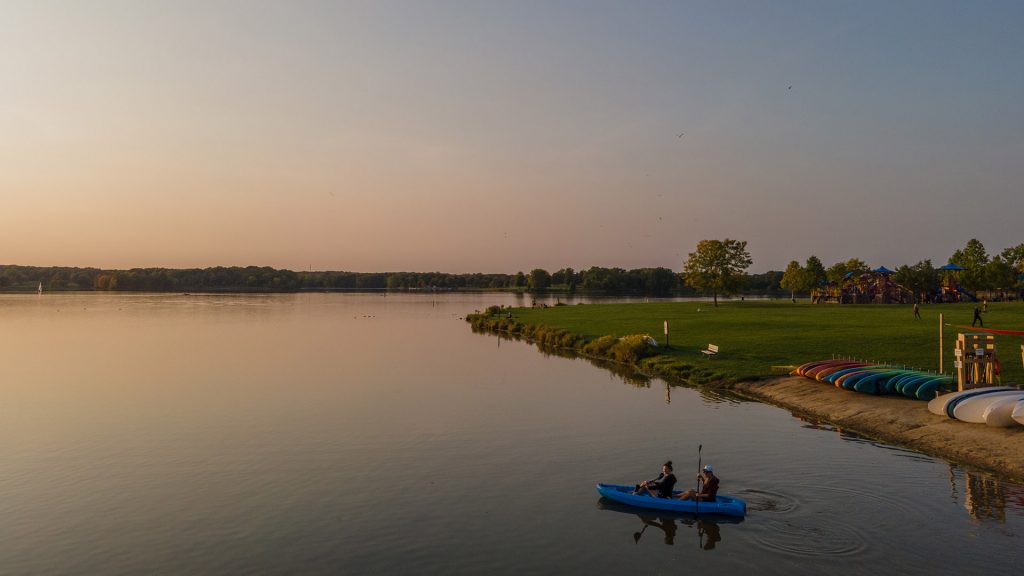 With 13 individual properties and nearly 25,000 acres of woods, water and recreational facilities, the Huron-Clinton Metroparks are one of the nation’s premier regional park systems.
With 13 individual properties and nearly 25,000 acres of woods, water and recreational facilities, the Huron-Clinton Metroparks are one of the nation’s premier regional park systems.
Established as the Huron-Clinton Metropolitan Authority, the Metroparks is a regional special park district encompassing Livingston, Macomb, Oakland, Washtenaw and Wayne counties. The HCMA was sanctioned by the Michigan State Legislature in Act No.147 of the Public Acts of 1939 and was approved in 1940 by the residents of the five counties.
The governing body of the HCMA is a seven-member Board of Commissioners. Two of the members are selected by Michigan’s governor to represent the district at large and the other five are selected by the Board of Commissioners from each of the five member counties. The Board of Commissioners held its first meeting in 1941.
Located primarily along the Huron and Clinton Rivers, the Metroparks represent a greenbelt encompassing the Detroit metropolitan area … and provide a natural oasis for more than 7 million visitors each year.
Amenities found across the Metroparks include picnicking, fishing, swimming, boating, hiking, nature study, biking, golf, disc golf, cross country skiing, sledding, snowshoeing and a diversity of outdoor programs and special events. We feature several hundred miles of trails – including 55 miles of paved hike/bike trails – with some connecting to trails outside the Metroparks, including Michigan’s Iron Belle trail system. The Metroparks also operate seven regulation golf courses and a par three course.
All Metroparks are open 365 days a year, providing residents opportunities to enjoy the full variety of Southeast Michigan’s four-season climate.
Education is an important part of our mission. With three mobile learning centers and 10 full-service interpretive centers – focused on nature, history and farming – the Metroparks provide a wide variety of educational programs to the region’s schools, community organizations, other groups and, of course, our visitors. Each year, we engage more than 1.5 million individuals with programs about the environment, science, nature, geography and regional history.
The Metroparks’ budgeted expenditures are around $58 million each year. Our team includes nearly 200 full-time staff members and more than 500 part-time employees. The Metroparks are funded principally by a .2104 mill property tax levy and revenues from vehicle entry fees and user fees. A Metroparks pass (daily or annual) is required to enter any Metropark in a vehicle, though cyclists and pedestrians are admitted at no charge.
Our Mission
To bring the benefits of parks and recreation to the people of southeast Michigan. All the people. All their lives.
Our Vision
To be a unifying force – and indispensable resource – in southeast Michigan: One Region. One Metroparks. Endless Experiences.
Our Values
Access
Make the Metroparks available to all in the region, regardless of race, age, income, gender, or ability.
Commitment
Treat all employees, constituents, and stakeholders as partners in our shared mission and to enhance the health and well-being of all residents in southeast Michigan.
Diversity
Embrace and reflect the region’s richness – both its natural environment and the communities within it.
Equity
Create a system that more fairly serves all individuals, families, and communities across the region.
Leadership
Provide innovative programs, valuable educational offerings, and proactive community engagement.
Stewardship
Responsibly manage our natural resources and maintain financial stability to protect the public’s investment.
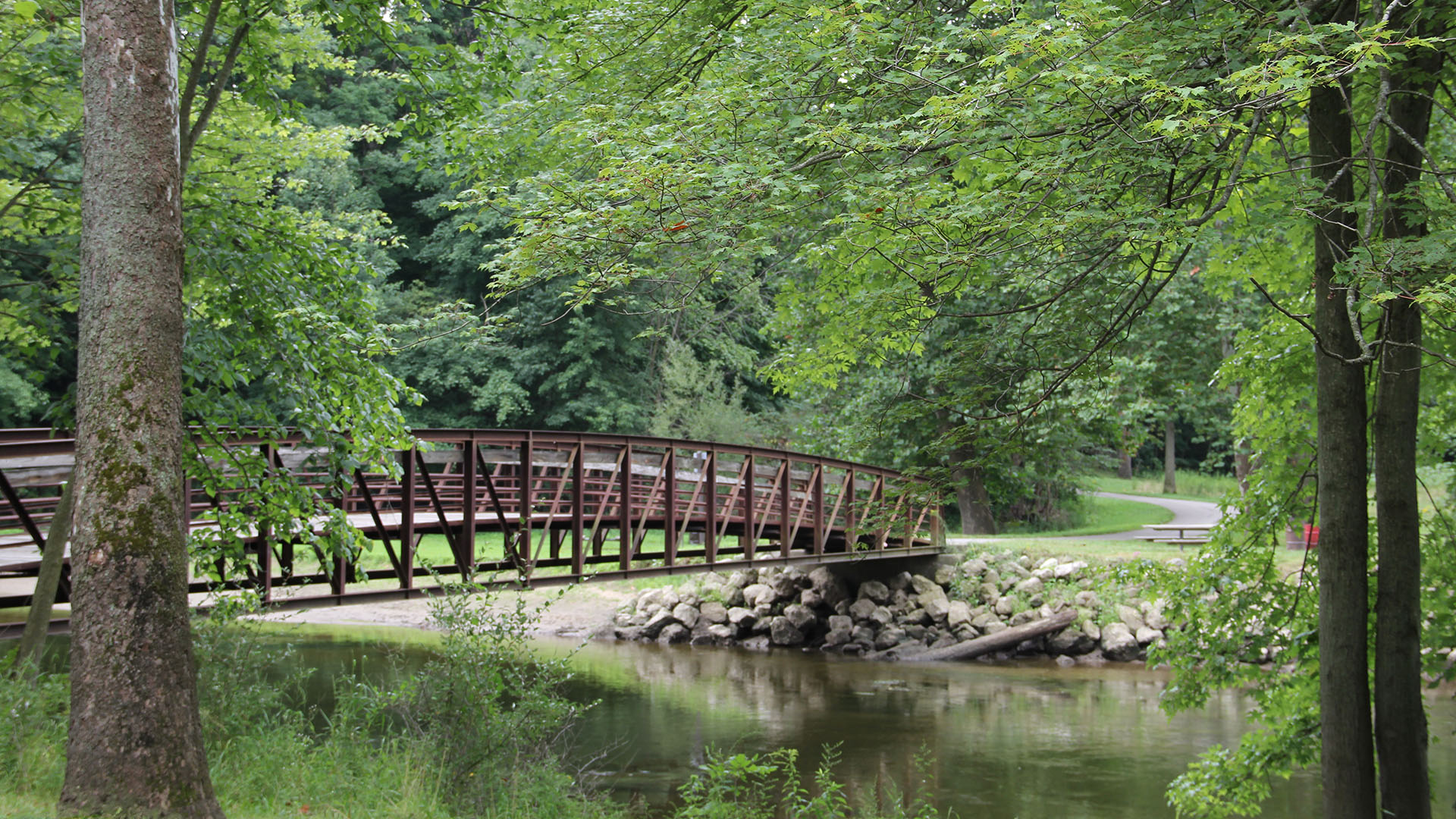
History Of The Huron-Clinton Metroparks
Like so many important projects, this one started with a simple but powerful idea: People need parks.
In Southeast Michigan, back in the 1930s, parks were certainly in short supply. The region’s five counties – Livingston, Macomb, Oakland, Washtenaw and Wayne – had only 6,000 total acres of parkland among them. Just a small, small fraction of the 2 million plus acres that made up Southeast Michigan. With three million residents to serve, those parks were plagued with long waits for cars to get in and picnickers to find picnic spots. Residents had only four public bathing beaches to choose from. And access to only 14 of the region’s 600 inland lakes.
But people need parks.
This was an idea that had been sweeping the country, one that inspired the founding of metropolitan park systems across the country. Increasingly dense cities and suburban communities meant people were further and further removed from the benefits of open air, access to nature, outdoor recreation and a simple change of pace from the noise, crowding and stress of urban life. More parks, bigger parks, better parks … they can have a profound effect on quality of life and enhance livability throughout a region.
Southeast Michigan needed more, bigger and better parks. A lot of people in the region agreed with that thought. Two people made it happen.
The Start Of Something Big
Their names were Dr. Henry S. Curtis and Professor Harlow O. Whittemore.
Curtis was one of America’s leading experts on recreation, having written several books on the topic, helped organize the National Recreation Association and served as director of playgrounds for New York City, Washington D.C. and the state of Missouri. Whittemore was chairman of Landscape Design at the University of Michigan. He’d helped design and develop a wide variety of public parks and private estates.
What brought these men together was a 1936 recreational survey of Washtenaw County that Curtis had directed (Washtenaw County being where you’ll find the University of Michigan). The results of the survey were not positive. It found that Washtenaw had only a single public recreational facility to serve its population, a small county park. Likewise, no lake suitable for recreation had public access – all were surrounded by private development. Washtenaw was what might be called a “recreation desert.”
That’s when Curtis and Whittemore met.
Whittemore had long been intrigued by the notion that the Huron River offered tremendous potential for public recreation. As Curtis and Whittemore discussed ways to solve Washtenaw County’s park problem, they decided the most practical, quickest and smartest answer was to develop parks along the Huron River valley, where land would be available and an important body of water – the river – would be accessible.
As happens when people get excited about an idea, this particular idea inspired an even bigger idea: What if, they asked each other, we could develop both the Huron River valley and the Clinton River valley?
After all, these two rivers formed a 120-mile “horseshoe” shape around the Detroit metropolitan area – the kind of “emerald necklace” a number metropolitan park systems across the country were envisioning for themselves. And those river valleys could provide ready access to untrammeled nature for the residents of Detroit – the region’s largest, most concentrated population – with downtown Detroit as close as 25 miles and no farther than 60 miles from that horseshoe.
The Huron-Clinton Metropolitan Authority
Their vision was ambitious: Four or five large (that is, more than 1,000 acres each) parks along the two rivers, from the mouth of the Clinton River on Lake St. Clair to the headwaters of the two rivers in the northwest part of the territory down to the mouth of the Huron River on Lake Erie. Connecting these parks would be a limited-access parkway to make movement from one property to the other easier for visitors.
That idea caught on. It quickly gained support from citizens groups, other public agencies in Washtenaw and Whittemore’s colleagues at the University of Michigan.
In 1937, the Huron Valley Committee – later renamed the Detroit-Huron-Clinton Park and Parkway Association – was formed to advance the plan throughout the region. Over the next several years, the vision of a major metropolitan park system along the two rivers attracted significant support from local communities, public officials, businesses and, most importantly, the citizens of those five counties. In 1939, the legislature authorized the establishment of the Huron-Clinton Metropolitan Authority (approved and signed into law as Public Act 147), with the provision that it be approved by the voters in each of the five counties in the 1940 general election.
Selling The Metroparks
The Detroit-Huron-Clinton Park and Parkway Association got to work promoting the vision of a regional parks system. They launched a marketing campaign that ran over the next year to identify the public need and the solution to that need.
Everyone could agree that that the region was lacking in outdoor recreation space. And there was proof to back that notion up: The National Park Service had set a minimum standard of one acre of public parkland for every 100 people; but the Detroit metropolitan area fell woefully short of that minimum with one acre for every 500 people. Which is why the few parks the region had were so crowded.
Also, the region faced a critical need for cooperation across municipal and county lines. The unprecedented size and scope of the Metroparks vision – the planning, construction and maintenance – was beyond the capacity of any one government entity to pay for. To bring the vision to life, the region needed to unify.
And the financial plan put before the voters? A quarter mill ad valorem (that is, proportional to be value) tax on property within the five counties, which would be supplemented with grants from other governmental agencies.
On Election Day – November 5, 1940 – voters said a resounding yes to this plan … by a two-to-one margin.
From Vision To Reality
So, it was time to create the Metroparks. “But where should they go?” was the first question facing the newly appointed Board of Commissioners and newly hired Metroparks staff. The Huron and Clinton River valleys, after all, offered a large footprint to consider.
In the late 1930s, the Detroit-Huron-Clinton Park and Parkway Association had worked to get recreational planning studies completed by the National Park Service and Michigan Department of Conservation. Both studies provided detailed information on the region’s demographics, physical features and topography, forest cover and agricultural land, industrial and business concentration, road systems and traffic flows, political subdivisions, as well as current recreational areas and facilities. These studies informed the park placement strategy.
As did the National Park Service’s 1938 survey, “Recreational Use Of Land,” which identified key planning principles for metropolitan areas:
- Parks should be placed within a 50-mile radius of the central city, which would be easily accessible through existing transportation methods, in particular private automobile.
- Natural topographic features – streams and valleys, lakes and shoreline, wetlands, forest – and areas of historic significance to the region should be preserved.
- A region should be served by different kinds of public parks – state, regional, county and city – with the metropolitan park system responsible for large recreation areas in the zone extending from near the boundaries of the central city to the limits of the region.
- Central cities were expected to continue to acquire and administer local parks and recreational areas within their own borders.
On a practical level, the Commission focused on developing fewer but larger areas rather than more but smaller properties. This would allow the Metroparks to concentrate more facilities and activities at each property, turning the individual Metroparks into important regional destinations people would be willing to drive distances between 25 and 50 miles to enjoy.
Other questions taken into consideration as the Commission looked at potential properties to acquire for the Metroparks include:
- Does it offer a variety of topographical features?
- Is it next to and/or include water?
- Does it have marginal economic value for agricultural or industrial purposes?
- Is it within 50 miles of the region’s core population?
- Is it close to existing or planned highways?
- Is there a sufficiently large contiguous tract of land available?
Using these criteria, the first two Metroparks developed were St. Clair Beach (now Lake St. Clair) Metropark and Kensington Metropark.
The First Metroparks
Why those two properties? Simple: They fit the plan.
Both sites were located within 50 miles of the center city (22 miles for St. Clair, 35 miles for Kensington); both were located along major roadways; both offered water amenities; both were large tracts of lands; and for both, the land was of little economic value (in fact, much of the land at St. Clair and Kensington was considered swamp).
Also, for the new Huron-Clinton Metroparks, one would be located on the Huron River (Kensington) and the other very near the mouth of the Clinton River (St. Clair).
Of course, turning those swampy tracts into major metropolitan parks took some work.
For Kensington, in 1946 a dam was constructed south of the park along the Huron River, which turned a 70 acre lake into one of 1,200 acres. Two new swimming beaches were added, as well as access points for fishing and boating opportunities. Also picnicking facilities, hiking trails and camping areas for organized groups. At St. Clair, two million cubic yards of sand were dredged from the lake to raise the land level about three to four feet. And a lakefront beach almost a mile long was created.
Kensington opened to the public in 1948, St. Clair (known at that time as Metro Beach) in 1950. Both parks were instant successes with the people of the region. Each was soon attracting up to 50,000 visitors a day during peak summer months.
And their popularity has never waned. The construction of Interstate 96 and US-23 near Kensington and Interstate 94 near Lake St. Clair helped more people across the region easily access the benefits of these properties. In fact, not only are Kensington and St. Clair the oldest Metroparks, they’re also still the most popular Metroparks, with Kensington drawing over 2 million visits a year and Lake St. Clair attracting nearly 1.5 million.
The Next Generation Of Metroparks
In the 1950s, additional Metroparks were opened, filling in the system’s intended footprint surrounding the metropolitan region along that “horseshoe” of the Huron and Clinton Rivers. Lower Huron Metropark opened in 1951, the first Metropark in Wayne County. It was complemented by Hudson Mills Metropark, located nearby in Washtenaw County. Both were conceived as more linear parks – the Huron River flowing through them – with a focus on picnicking.
During that period, the Metroparks Authority began operating three other parks that didn’t completely fit the original Metroparks plan. All three had been donated to the Metroparks. And all three were substantially smaller than the earliest Metroparks.
Two of those properties, Delhi and Dexter-Huron remain part of the Metroparks system, as they fill in the footprint along the Huron River near Hudson Mills Metropark – meaning staff can economically maintain all three properties – and provide canoe and kayak access to the river, as well as picnic facilities. The third property, Marshbank, is now part of the West Bloomfield Parks.
A Fresh Look At The Future
By the early 1960s, with about 16,000 acres of parkland under stewardship, the Metroparks Authority saw a need – and opportunity – to refresh the long-term vision for the system.
In 1962, the Metroparks partnered with the Detroit Metropolitan Area Regional Planning Commission to develop a regional recreational lands plan for Southeast Michigan that would guide the region to 1980. The plan was informed by several studies completed in the late 1950s:
- An inventory and analysis of existing public recreational land in the region.
- A user survey of eight regional parks.
- A market survey to learn more about the area’s demographics as well as information about non-users of regional parks.
- A survey of potential recreational sites, selecting lands on the basis of natural features that would make them appealing as parks.
This context helped determine how much land would be needed for the region’s parks over the next 20 years and what kinds of facilities they should have. The Metroparks and the Regional Planning Commission estimated that about 90,000 acres of parkland – state, regional, county and city – would be needed to satisfy the needs of the six million residents forecast to live in the region by 1980. Together, they estimated that the Metroparks should be able to provide 30,000 acres of the total needed by 1980.
Using that 30,000 acres figure as a goal, the plan identified guidelines for determining where, in general, the parks should be placed. It divided the region into three sectors – Northeast, Northwest and Southwest – so the planned features and activities could be fairly distributed across the region, making all kinds of Metroparks amenities equally available to all residents. All new Metroparks would need to be large enough to provide a full range of day-use activities.
Filling In The Vision
That plan played a critical role in guiding the growth of the Metroparks through the 1960s and 1970s:
- The Metroparks began the acquisition and development of three Southwest-sector Metroparks in Wayne County: Willow, Oakwoods and Lake Erie. Willow and Lake Erie focused on water activities, with multiple pools, splash pads and other constructed amenities as well as a marina and boat launch; Oakwoods focused on preserving the natural area and providing nature interpretation.
- In the Northeast sector, the three thousand-acre Wolcott Mill Metropark was located in central Macomb County (northeast sector, focusing on picnicking and regional history and farm interpretive centers.
- In the Northwest sector, the 2,225-acre Indian Springs Metropark was developed in the heart of Oakland County, at the headwaters of the Huron River. This Metropark focused on natural area preservation and environmental education.
- Also in the Northwest sector, Huron Meadows Metropark was developed to fill in the footprint between Kensington and Hudson Mills. It provided a golf course, natural area with trails and picnicking for people in the westernmost part of the region.
Just as the five-county region never quite reached the projected population of 6 million by 1980, the Metroparks did not reach that planned objective of 30,0009 acres. Today the region is home to about 4.4 million residents and the Huron-Clinton Metroparks cover nearly 25,000 acres across its 13 properties.
The Debate Over “Where”
No history of the Metroparks would be complete without looking at the tensions that have arisen over the years between the Huron-Clinton Metropolitan Authority and the city of Detroit and Wayne County. Those tensions had long been driven by the issue of where Metropark properties should be placed.
The first flare up of this debate happened shortly after the 1940 vote to authorize the establishment of the Metroparks. While a majority of Detroit and Wayne County voters approved the enabling legislation, the Wayne County Board of Supervisors brought suit against the Authority. The matter at hand was whether residents in one jurisdiction should be taxed for parks outside that jurisdiction. The Supervisors – worried that Detroit and Wayne County would pay the lion’s share of taxes, but not receive the benefits of having a large park nearby – questioned the Authority’s legal power to levy a quarter mill property tax. The courts, however, found in favor of the Huron-Clinton Metroparks Authority.
The issue of placement came up again in the late 1960s and early 1970s. Leaders in Detroit and Wayne County questioned the basic premise that parks 25 to 50 miles from Downtown Detroit could serve the breadth of their residents. Over a quarter of Detroit’s population, they argued, did not have access to an automobile, effectively putting the Metroparks out of reach; others were unwilling to travel the distance to take advantage of the Metroparks’ offerings.
One possible answer to this problem was for the Authority to locate a park in the city of Detroit. But no parcel of available land within the city was large enough to be developed into a Metropark. Instead, Metroparks commissioners and staff brought forward a plan to renovate and take over operation of Belle Isle, a 1,000 acre island park that was then (as now) Detroit’s largest and most heavily used park facility.
This plan was well received by city leaders. In 1970, Detroit (in a public vote) approved the idea of leasing the park to the Authority. But the price tag for redevelopment was $39 million – equivalent to over $250 million today – and well beyond the Metroparks’ financial capacity to take on without increasing the system’s millage.
A proposition to increase the Metroparks property tax levy by a quarter mill was put before the voters of the entire region in 1972. This proposition was defeated.
In 1973, the Authority went back to the city of Detroit with another plan to lease the park and undertake a less ambitious redevelopment effort. The Metroparks would fund this plan by introducing vehicle entry fees across all Metroparks and by pushing back the timetable for parkland purchases in other parts of the region.
The city objected to this plan on the grounds that it meant giving away Detroit’s control of one of its jewels to a regional organization. The city proposed, instead, that the Authority grant money directly to Detroit for the operation of city parks or to build smaller parks within the city. The Metroparks rejected both of these suggestions as a violation of the legislation that enabled the creation of the Huron-Clinton Metropolitan Authority: By definition, these smaller parks would not be regional in nature.
Michigan’s legislature held hearings that year to consider changing the Metroparks’ enabling legislation. In the end, no changes were made.
In the years since, the Metroparks have offered educational outreach programs to groups within the city through its interpretive program. In 1995, a 48-foot exhibit trailer, or Mobile Learning Center, was put on the road with the specific goal of reaching people within areas of the region who were less likely to be able to visit a park.
More recently, a new spirit of cooperation has arisen between the city of Detroit and the Huron-Clinton Metroparks.
In 2020 the Metroparks and The Detroit Riverfront Conservancy announced a multi-year, pilot partnership focused on widening access to new programs and recreation for city and suburban families, as well as leveraging the world-class parks, greenways and public spaces managed by the two organizations. Through this partnership, the Metroparks will establish a physical presence in Detroit and contribute $6 million over seven years to the Conservancy for expanded programs and operations at the future Ralph C. Wilson, Jr. Centennial Park on the West Riverfront.
Today’s – And Tomorrow’s – Metroparks
What started as an interesting idea for Washtenaw County shared by Henry Curtis and Harlow Whittemore is now one of America’s premier metropolitan park systems. In between, the Metroparks became a bold vision for the region and a tremendous amount of work for thousands of dedicated parks and recreation professionals.
Today’s Metroparks is made up of 13 individual properties with offerings that range from protected natural habitats to preserved regional history to high quality recreational facilities that provide four seasons of fun – all 365 days a year – to the people of Southeast Michigan. With miles of trails, a diversity of water features, a broad menu of educational offerings, diverse sports facilities and seven regulation golf courses (plus a par three and a miniature golf course), the Huron-Clinton Metroparks is where the people of Southeast Michigan – and beyond – gather to explore, discover, relax, exercise, play and lose themselves in the beauty and peace of nature.
Where will the Metroparks go in the years to come?
As history shows, you never quite know. But plans currently in place – and being rolled out – include a greater commitment on the part of the Metroparks to regional leadership on environmental issues, education and support of the Southeast Michigan’s school systems, stewardship of natural resources and fostering a culture that supports enhanced diversity, equity and inclusion.
More than any time in its past, the Huron-Clinton Metroparks are committed to fulfilling its mandate to be a national-class metropolitan park system for the people of Southeast Michigan – all the people, all their lives.


